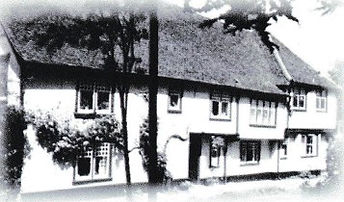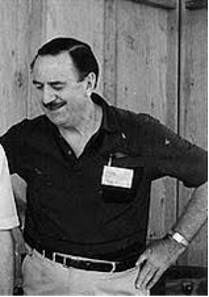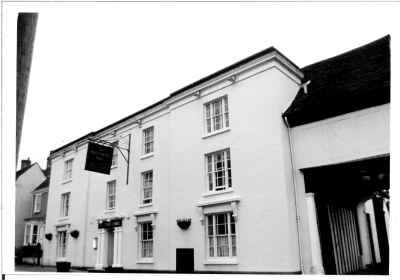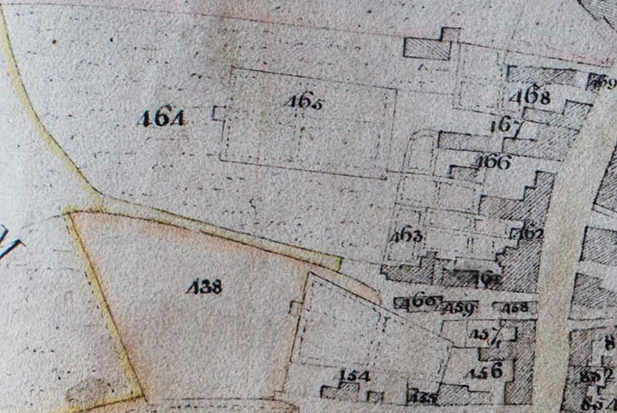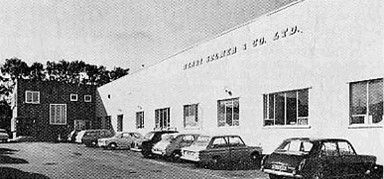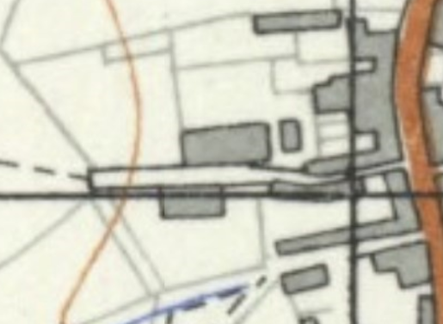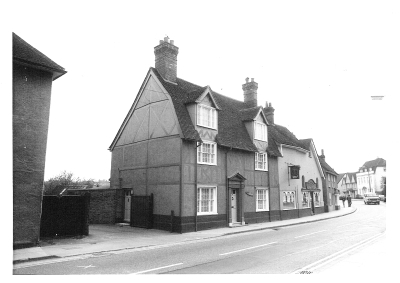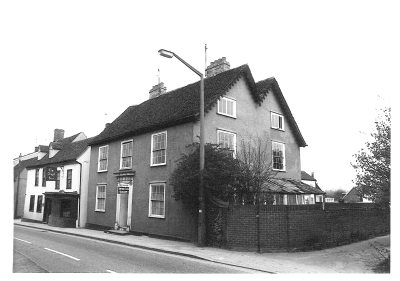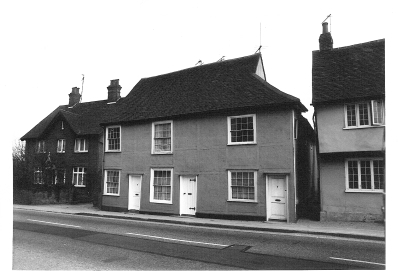- Home
- Historic Properties
Guided tours are available to small organised groups of up to ten people.
Use the Contact Page if your organisation is interested

No 3
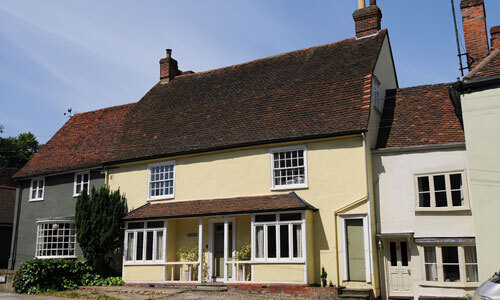
No. 5 "Cottesmore"

No. 7 & 9

No.11 "The Old House"

Nos. 13 & 15 "Bradford House"
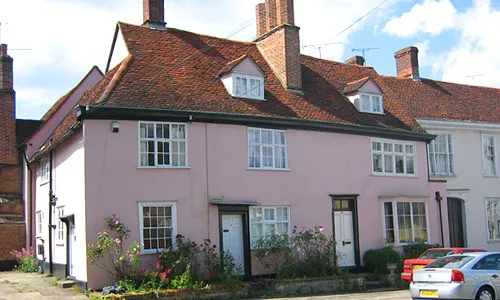
No. 19, 21 & 23
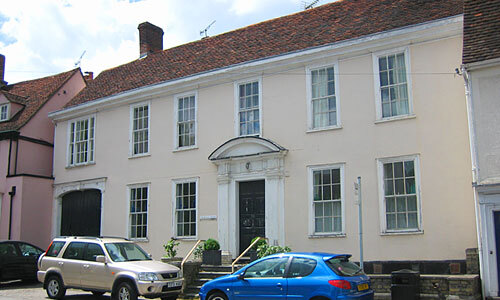
No.25 Georgian House
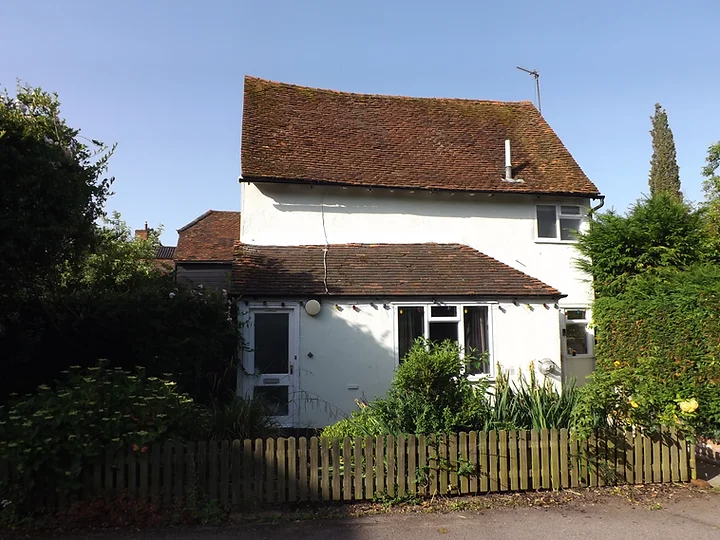
The Cottage, 25 Bradford Steet
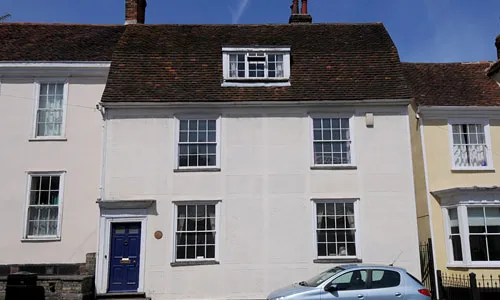
No.27 "Makers"

No.29 "Clinton House"

No.31 "The Old Court"

No.37 "The Bawn"

No.39 "Gresham House"

No.41 "Dragon House"
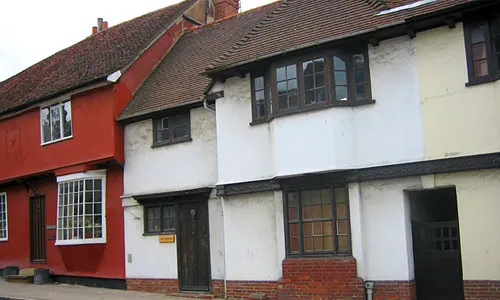
No. 43
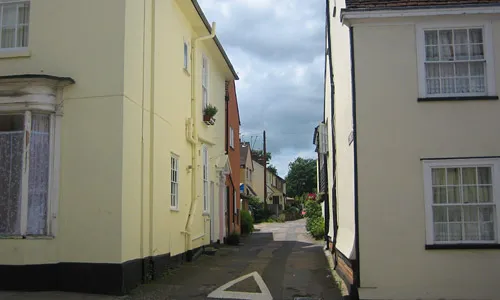
Friars Lane

Nos. 63 to 73
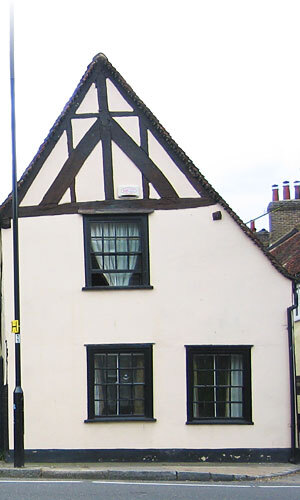
No. 75

Woolpack Lane
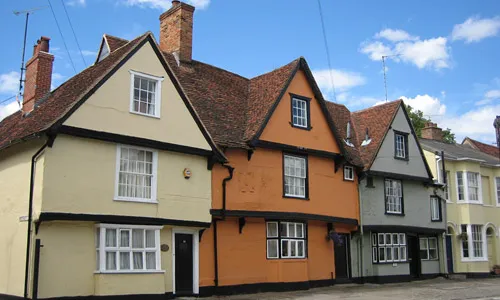
No. 77, 79 and 81 "The Woolpack"
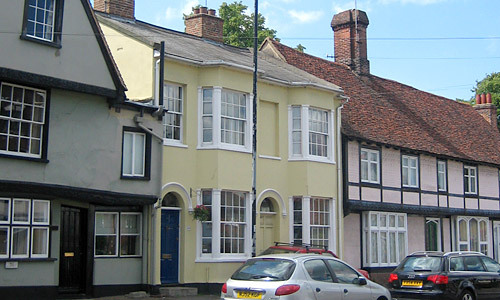
No. 83 Bay House

No. 85 & 85A "The Mattings" and "Jute House"

No. 87 "Wentworth House"

No. 89 "Maysent House"
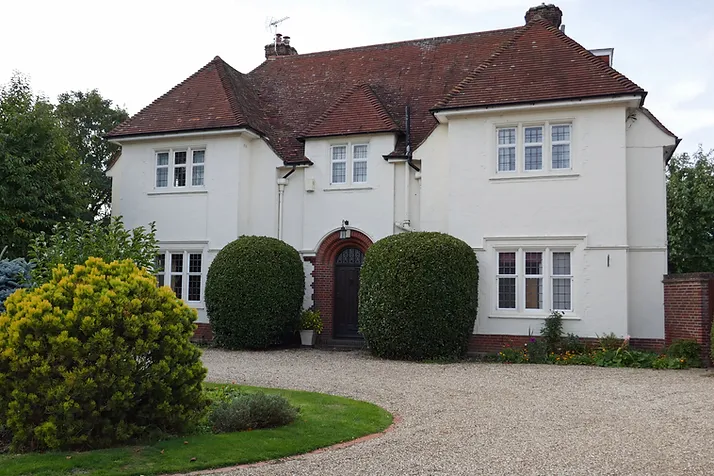
Queens Meadow
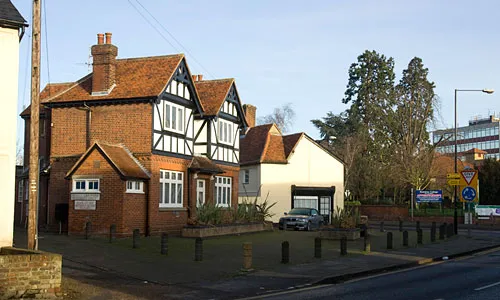
No. 129/135 Former "The Six Bells"

No. 173 "Dial House"

No. 185 Mill House and Bradford Mill

Bocking, Bradford Street Bridge

Fulling Mill House (Convent)

No 114 "The Tudor House"

No. 110

Nos. 108 & 108A
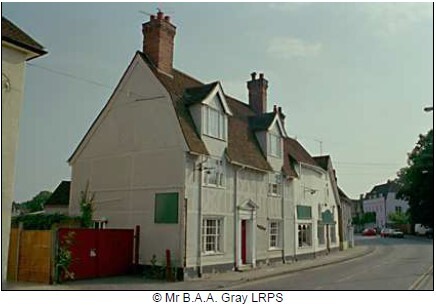
Nos. 104A & 106

Nos. 102 & 104

No. 98 & 100
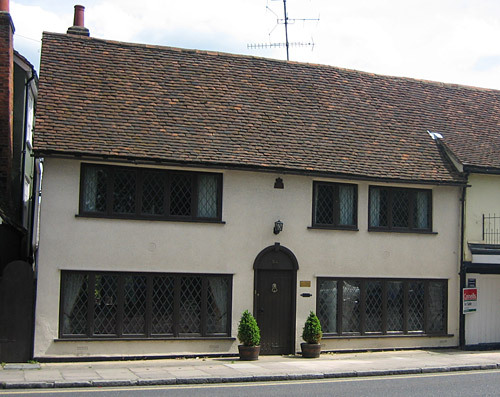
No. 94 Wych Cottage

Nos. 92 & 92A

Nos. 84 & 90
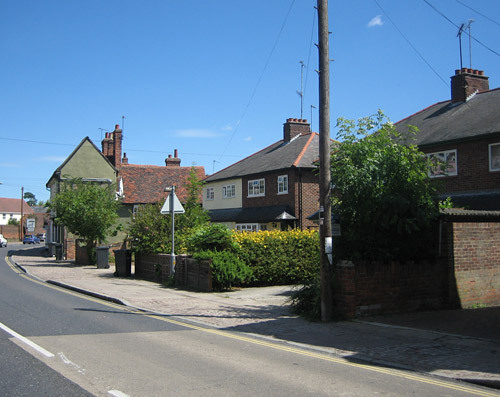
Nos. 70 - 76

Nos. 68 & 68A
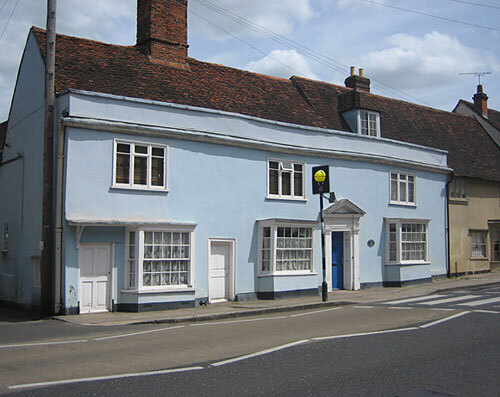
Nos. 54, 56 & 56A
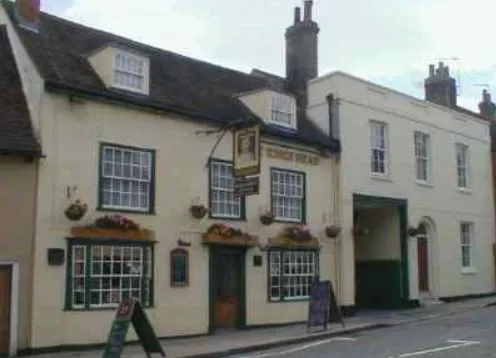
Nos. 50 & 52
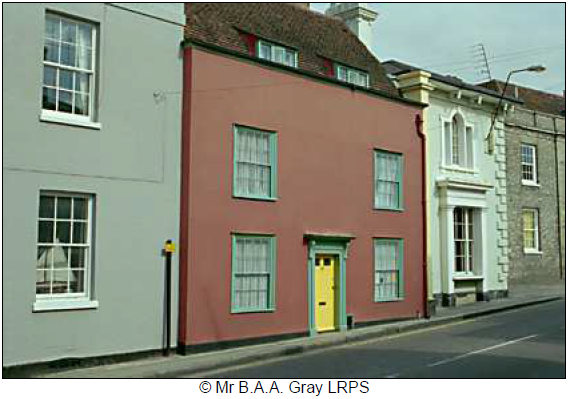
No. 48

No. 46 "Cardinals House"

No. 44

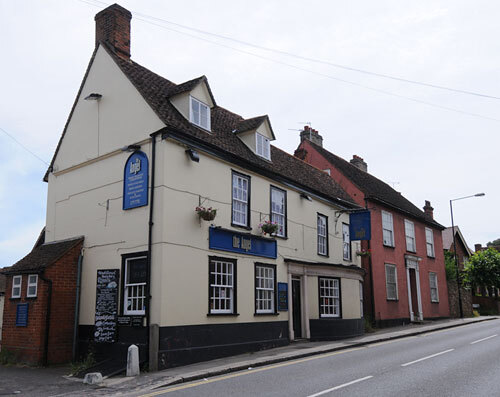
No. 36 "The Angel"

No 24
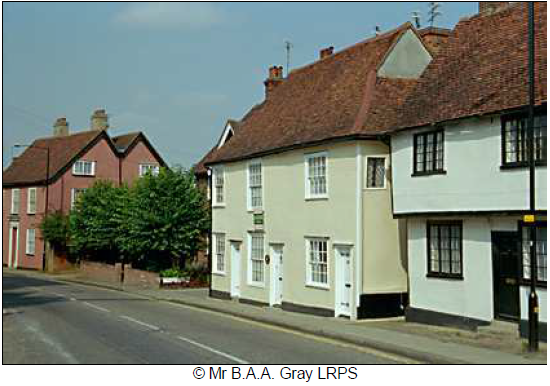
Nos. 16, 18 & 20

Nos. 10, 12 & 14

Nos. 6 & 8
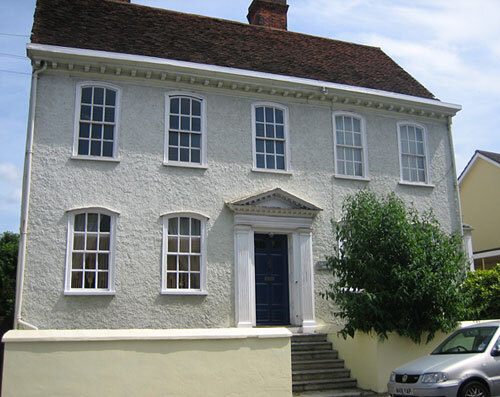
No. 4 "Courtlauld House" (originally "Beech Holme" and later "The Elms")
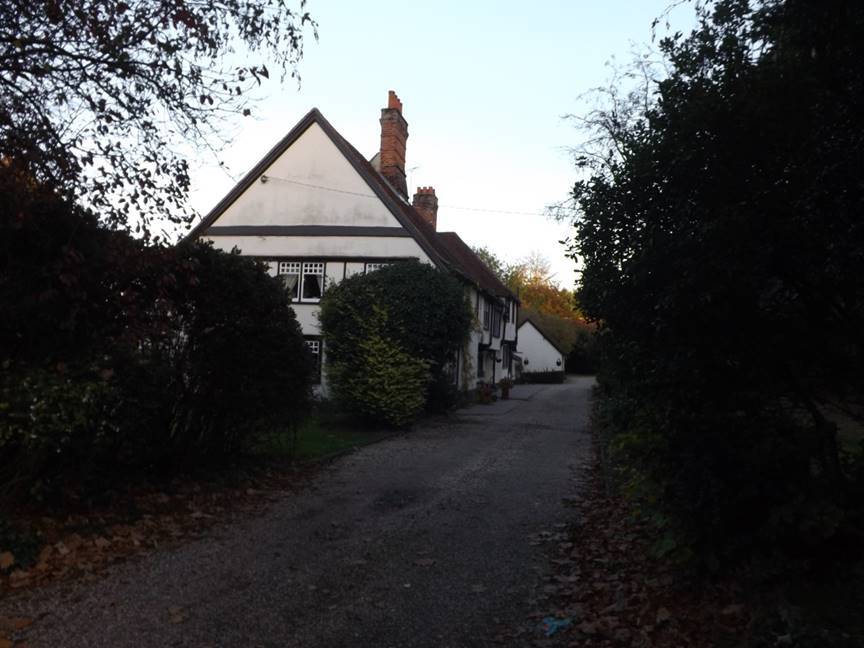
No. 2 "Little Bradfords"

No 3
A 17th century timber framed, plastered, cottage with exposed beams and 20th century additions. In 1680 John Ruggles, one of the main clothiers of the day, bought this “improved residence” which had been part of a medieval rambling mansion. The property had originally been called Stockwell House, then the “blacke house” or “black horse” and then Headwell House. The names “blacke house” and “black horse” suggest it was or had been an inn. A century later it passed to the Savill family, yet another leading clothier family and then to yet a third main clothier family – the Englishes.
A deed of 1655 refers to Stockwells otherwise The Blackhorse. A will of 1670 refers to a house called Blackhouse. A deed of 1681 describes the “black house” as being an alternative name for Stockwell later renamed Headwell house.

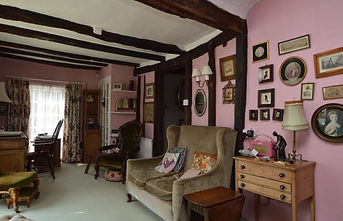





No. 5 "Cottesmore"
An early Tudor octagonal chimney with filleted sides is concealed within the 18th century Mansard roof. The roof itself is not from the French influence but from an early English tradition designed to enable the use of shorter timbers. It is reputed to have housed three looms and a wool loft. In the 19th century it was the home of two generations of printers and publishers, who conducted business from a shed in the garden before moving in to the premises in Braintree. In the mid 20th century it was owned by a jazz critic and Duke Ellington used to stay there.
The North side of Number 5, together with nos. 7 and 9 are an H plan of the 14th century. The South end incorporates the visible gable frame of an adjoining 16th century timber building. The octagonal chimney within the 18th century Mansard roof tells of 16th century alterations to the original 14th century building. The rafters, above the collars are of C19 soft wood but some rafters in the lower slopes are soot-blackened. Wide hardwood floor boards exist at attic level. The first floor is mounted on chamfered pine binding-joists and the southern ground-floor room has a wooden ceiling cornice of elaborate profile, also a chair rail and fire surround with concentric indents from about 1830.
The Shearcroft family of local printers, publishers and stationers owned the house from ~1805 until the 1870’s and then Francis Henry Crittal lived here for a while.
Stanley Dance, one of the 20th century’s foremost jazz critics (full page obituaries appearing in UK and American broadsheets) and author of numerous biographies on leading 20th century jazz musicians, lived here after the Second World War. During his time here his great friend Duke Ellington would come to stay. The following anecdote was told by the owner in 1978 when FOBS first began collating information on the history of houses in Bradford Street:
“In the 1950s the house belonged to a jazz critic (Stanley Dance) whose great friend was Duke Ellington, the famous jazz pianist and band leader, who stayed here on occasions. The TV repair man heard him playing, assumed it was a recording until he walked into what is now our dining room and saw him at the piano; for twenty odd years he’d been wondering if it really was Duke Ellington and we were able to confirm that he was right.”
Stanley who married Helen Oakley, a Canadian record producer in 1947, worked for his father’s tobacconist business and it was only after his father’s death in 1959 that he was able to sell up and move to America.
Helen Margaret Oakley Dance, née Oakley (February 15, 1913 – May 27, 2001) was a jazz journalist, record producer, and music historian. She is perhaps best known for record production (including Duke Ellington) and for her biography of T-Bone Walker.


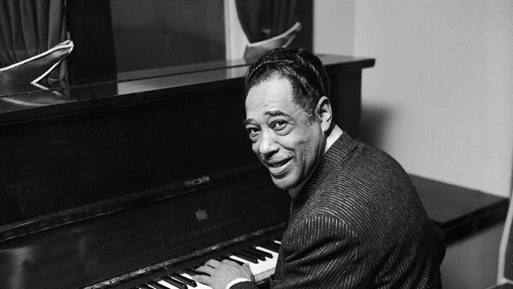

No. 7 & 9
It has been postulated that these two houses, together with the northern part of No., 5, began as a 14th century H plan hall house. Very little remains of the original structure as extensive alterations took place about 100 years later. Part of the interior was lined with linen fold panelling, common in the 16th century. When the northern part of the original structure was divided into thetwo houses we now see approximately 1.7m of the panelling remained in No., 7 with only 20 cm visible in No., 9. There are 16th, 17th and 18th century doors remaining, some with original door furniture. The eastern extension of No., 9 towards the road is an 18th century addition and has the original roof gutter passing through the loft.



No.11 "The Old House"
Built in the first half of the 16th century or earlier and originally on a T shaped plan with a cross wing at the south end, 18th century alterations and additions made the plan irregular. The first floor was originally jettied at the front, but is now underbuilt. Note the interesting octagonal chimneys built from two inch Tudor bricks. The interior has a number of original features including 2 open fireplaces with carved wood fire surrounds, panelling, doors and a fresco painting on the ground storey.
The earliest conveyance amongst the deeds to the property is the sale in 1545 by the clothier John Webbe to Thomas Gutter, another clothier. In the 19th century it was home to three generations of local surgeons. In the early 20th century Alfred Holmes, solicitor and local historian lived here.
In the late 20th century the house was a private hotel until 2015.
Some architectural details:
The range extending N-S along the street was originally jettied at its first-floor, this is now underbuilt, the roof is of oak with collard couples, the collars are in compression, side-purlins and no ridge-piece. The common-rafters of flat section and numbering is Roman. This range contains a good ground floor room at its N. end with deeply fielded pine panelling and bolection moulded chair-rails. Dentilled ceiling cornice of C1700, the room 3 bays long. The S. end of this range joins a room with predominantly Elizabethan details, including muntins with sunken central chamfers and a door with “Romayne” relief carved top panel. Floor joists of C 1575 deep section and vestiges of a dragon-beam corner at the S.E. This was extended in recent times, further S. A kitchen range extends 2 bays W at the C16 S end and is jettied along its southern wall, with a cyma-moulded bressummer. One creased oak door remains to cellar stairs, with original strap-hinges. The kitchen range has a side-pulin roof with arched and well profiled compressive collars at the bay intervals. The ceiling of this range is intruded.


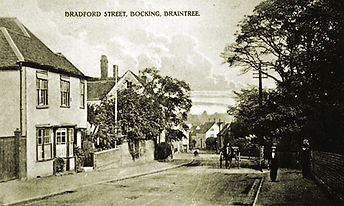



Nos. 13 & 15 "Bradford House"
The earliest extant document is the mid 17th century will of Joseph Boosey, a grocer who issued his own trade tokens during the Civil War. His son Nathaniel, another grocer, constructed the carriage way with room over at the north end of the original house. Nathaniel subdivided the house into four tenements for his children who survived into adulthood. In about 1730 Thomas Ruggles, a prominent clothier, modernised the house with a fine Georgian front, splendid staircase, pine panelling and the latest status symbol - the Venetian window in the room above the original carriageway.
Following three generations of the Ruggles the property was owned by the Savills, another prominent clothier family, in time it belonged to the Smoothys, including the notorious solicitor Frederick and then a baker who had a bakehouse in the back yard.
Some construction details:
The rear wing at the W incorporates a cross-wall frame in heavy oak with jowled story posts of the late C15; the wing is roofed with a remarkable gambrel, framed in oak and finely braced with carved members profusely pegged. Vee-struts above the collars. This probably dates from the C17. The front range along the street is all of one stylish build of C1725. The ground floor rooms retain original details, panelling, dentilled ceiling-cornice and bolection moulded chair rails. The stairs have twisted balusters of pine with column-turned bases, pine hand-rail; the whole retaining an underpainting of C17 type green (viridian-tint). The N. room was added not later than C1740 and has a Venetian window to the street. The front-range was re-roofed with original and new oak timbers, this has plain lap-dovetailed collars and side-purlins. There is late linenfold panelling along ground floor corridor from N-S.
Joseph Boosey, grocer of Bocking, in his will of 1655 gives all his houses and lands to his son Nathaniel. Nathaniel in his will of 1704, bequeaths his property which comprises four dwellings to his surviving children. He directs that his son Nathaniel “shall maintain the Gates under the Chamber he has given to his daughter Robinson and shall keep in repair the Stud and Timber that is the support and upholder of the Chamber”. The shop premises and room above are constructed on a separate frame to the frame of the remainder of Bradford House as is evident from a gap between the two frames as observed from above in the loft. According to research notes of Alfred Hills in the Essex Record Office Nathaniel Boosey died at Bradford House in 1704.
The 1728 will of Nathaniel Boosey indicates that he owned a house which was to be sold to pay his debts if he had insufficient money. The Booseys appear to have sold the properties, possibly about 1730, since the will of Thomas Ruggles, in 1744, refers to having purchased the tenements and land from Mr Powell. Thomas Ruggles was married three times, his third wife was Ann Eddowes, from London. Edith Freeman and Sir John Ruggles-Brise in their 1986 book on the Ruggles of Bradford Street pose the question “Was it to meet her pretentions that Thomas began to reconstruct two old timber framed properties into the Capital Mansion to be known as ‘Bradford House’?” Georgian House (Number 25) had a new Georgian font added to an older cottage behind in about 1720. Internal panelling, the staircases and archway in the hall, together with cornicing in the principal rooms are of the same design which suggests the same builder was responsible for both. It is quite probable that Bradford House was built after Georgian House, a question of keeping up with the Jones’s perhaps? Venetian windows became the latest must have detail in London about 1720 and the inclusion of such a detail may well have satisfied Ruggles’ third wife’s pretentions. The Ruggles (John) were still living at Bradford House in 1776.
By 1793 the property was part of the Savill estate.
Boiley’s bakery transferred here in 1937, with a bake-house in the back yard. They were undoubtedly responsible for the shop front being installed. Later a motor mechanic had the property and in 1983 the shop became an art gallery and picture framers until 2015.
The front is protected by original iron railings. During the Second World War when iron railings were removed from most properties, the house whose owner collected all the railings from the street or local area got to keep its railings.
Hack Cottage
The barn to the rear of 17-19 Bradford Street was built in the late 18th century as a stables and carthouse for the occupants of Bradford House. It is a well-built structure, retaining good historic interiors on both floors, apart from the western side ground floor that was converted to a garage when Ostler’s Cottage was built. Although commonly referred to as a barn, the survey shows that it was essentially a stables and carthouse for Bradford House, with the upper floors used for storing animal feed and hay. The small structure built into the adjacent wall was probably added in the late 19th century either as garaging for a small buggy or as a tackroom.
Planning permission was granted for conversion of the property to a dwelling unit in 2008 once a survey had been completed. The survey report was published in 2010. Hack Cottage was last sold in 2016.








No. 19, 21 & 23
This building, which incorporated Nos., 19 to 23, is said to have started out as a medieval hall house, on a half-H-shaped plan with the wings extending towards the west. There are reconstruction features from the late 15th, 16th and 17th centuries.
At the W. end of the S.W. wing the upper storey and the gable both project and have original moulded bressumers with shaped brackets. The original central chimneystack has three octagonal shafts on a rectangular base with a moulded capping. On the S. side of the S.W. wing is an original chimney-stack with two offsets and two octagonal shafts. Several rooms have some early 17th-century panelling. On the first floor is a door of early 17th-century panelling with cock's-head hinges.
The house was owned by the Booseys in the 18th century, by now a prominent clothier family, after moving from Bradford House, and they added a Georgian front to the Tudor house about 1742. In the early 19th century it was owned by a local builder, and by the time regular census surveys commenced it was subdivided in four units, one of them being used as a Quaker meeting house.
Some construction details:
No. 19. Late C15, two bay cross-wing, and part of hall structure to north. Front altered in C20. Two storeys. To the rear is a C16 extension, double jettied on the west side with moulded bressummer and shaped brackets. C16 chimney stack with octagonal shafts. Original mullioned windows remain and there are good C16, C17 and C18 doors, some original ironmongery. Wall paintings of mid C16 in simple panel and foliate designs. Framing exposed internally. Roof has two braced crown posts, with centre purlin. Some late C18 dado panelling on ground floor.
No. 21. Originally part of a C15 open hall linked to no. 19, the original doorway seen in the left hand side in the picture. Note the dentilled carving on the cross beam. First floor inserted. Main posts have stop chamfers pilasters. To the rear is a late C16 extension with gable roof running parallel to main range. Good C16 and C18 doors. Mid C18 doorcase with moulded architrave and small cornice.
No. 23. Remaining part of open hall (no. 21) with C16, two storeyed extension to the north, originally with long wall jetty. C16 staircase tower and four bay C17 wing at rear. Both have jowled storey posts. Halved and bladed scarfs. Extensive alterations in mid C18, when staircase replaced with present one; featuring turned balusters. Mid C18 panelling, ceiling cornices and doors. Mid C18 cupboard. Roof tiled, with moulded wood eaves cornice.
In 1775 William Boosey inherited his father’s (Nathaniel III) house in Bocking and died in 1819. However, in 1798 he paid land tax on Resting Seat House (in Church Lane) according to Alfred Hill’s research notes. Thomas Passfield owned 19-23 in the 1793 census and paid land tax on it in 1798. It is presumed that William sold the property to Thomas Passfield. Surveys in 1803 and 1807 suggest that Thomas and his family occupied the whole building with the cottages in the yard being tenanted. Thomas died in 1818 and under the terms of his will it would remain in the family until its sale after the death of Sarah Passfield in 1885. By the time of the 1841 census the building had been subdivided into three or four units by Sarah who had a head for business.
There is then a gap in the records but from 1911 to 1955 the property was always owned by one family. Besides the property facing the street there were three cottages in the yard behind. One of these was bought by the then owner of number 25 in 1923 whilst the other two were demolished in the slum clearances of 1939. The houses were sold individually in 1955.
A report from the Chelmsford Chronicle 23 December 1905 said “Workmen engaged in removing some Jacobean oak panelling from the wall of an ancient house in Bocking, came across a great oak stanchion, on the exposed surface of which was a beautiful arabesque painting of the Tudor period.” The panelling was refitted to preserve the painting but a copy was made and reproduced in the 1906 book, Braintree and Bocking, by May Cunnington and Stephen Warner.








No.25 Georgian House
The rear west wing was built in two stages as evidenced by the roof construction. The oldest section is typical of the first half of the 17th century with a late 17th century extension. In 1700 the property was described as “fower rooms and a buttery”.
The Georgian front was built between 1707 and 1735. The quality of construction is very high with particularly fine staircases, panelling, fire surrounds and door cases. The house was home to clothiers until 1804.
From 1806 the Rev. Thomas Craig, a Victorian gentleman of the cloth, and minister of the Bocking Meeting, lived there until his death in 1865. Various families lived there until the end of the second world war when it became the Victory Club for ex-service personnel.
It was used by Bocking College until 1970 when it became the Abbyfields first sheltered housing project in Braintree, being opened by the Duke of Westminster. Their Silver Jubilee was celebrated by a visit from Prince Charles the then royal patron. In 2005 the house returned to use as a family home.
Much of the timber used in the 17th century construction made use of timber from an earlier building on the site. In fact the earliest part of the construction incorporates some of the frame from the earlier building. There is a beam in its original position with mullion holes and wind door grooves surmounted by a panel of wattle and daub in the loft space which is thought to date from the 14th or 15th century. The Hearth Tax assessment of 1670 shows that the then owner, clothier Samuel Denny, had two chimneys. One still exists the other was removed in 1970 alterations.
There is a gap in the records after 1707 but by 1735 the clothier Thomas Reynolds, whose wife was daughter and sister of local carpenters Joseph and Joseph Lawson, gave the house on his son Thomas as a marriage settlement when the younger Thomas married Mary Ray, daughter of another prominent clothier.
The property was bought by the Tabor family in 1767 and in 1784 the will of Samuel Tabor devised the property to his daughter Mary and her husband Timothy Boosey, one the sons of Nathaniel Boosey III. Timothy died in 1804 and the property was bought by Thomas Nottage (yet another wealthy clothier) who sold it to the Rev Thomas Craig in 1810.
The Rev Thomas Craig, born in South Leith, Edinburgh in 1780 of a prominent Scottish lawyer, became pastor of the Bocking Congregational chapel in 1802 and served until his death in 1865.
Following the death of the Rev Craig the property was owned by two of Braintree’s drapers, first J. Blomfield and then W.F. Pilcher. Mr Picher’s widow sold the property in 1937 and it was owned successively by three family trusts until it was bought by public subscription in 1945 and became the Victory Club.
The Victory Club closed down in July 1950 having seen membership dwindle from over 400 at opening to under 80. It was closely tied to the British Legion but had less restrictive membership requirements. On closure of the Club the building was administered by the Charity Commission. It was considered as a possible location for a local museum that was being considered at the time but became an Annex to the Tabor College and was used for Sixth Form studies in English and Commercial Studies.
In 1970 the Charity Commissioners sold the property to Abbeyfield who, after some internal modifications opened their first Sheltered Housing in Braintree. Ever changing legislation covering such establishments meant that by 2005 the building had become unsuitable for their needs.
Once Abbeyfield left, the property underwent a period of restoration to bring it back into use as a family home.







The Cottage, 25 Bradford Steet
This is a mid-16th century 2 storey, 3 bay timber framed house, with a very good quality frame which has chamfering of most members. The roof is side purlin with straight wind braces. There is a dormer at the rear which possibly relates to a former staircase tower. The original chimney breast still remains within the building.
In the 1916 Royal Commission of Historical Monuments the description of the Cottage includes a moulded on the south facade which no longer exists. The 16th century date is based on the construction involving the use of storey posts to support the chamfered beams. One of the original windows has horizontal sliding, Yorkshire, sashes. Another old window is glazed with diamond leaded lights.
In 1901 the cottage was used as a workshop and garage.
The Cottage has been part of the curtilade of Georgian House since 1923.
When Abbeyfield used Georgian House as sheltered housing the manager lived in the cottage.

No.27 "Makers"
The part of the house on the road front is of 17th century construction with a later C18 facade but the rear two storey, two bay, building with attic and cellar is of 15th century construction with crown post roof. This early part of the building is constructed of substantial timber framing. The first floor rear bedroom has a single mullion window in its southern wall and the remains of a slot for a horizontal sliding shutter. The earliest extant deed from 1653 calls the house Makens although many later deeds rendered the name Makins. The crinkley-crankley wall in the garden of 18th century construction dates from the time when the house and Georgian House next door were owned by the same family. Throughout much of the 18th century and 19th century the house was tenanted whilst the owners lived elsewhere.
The original name of Makens found in the early deeds most probably refers to one John Maken who is recorded in the 1631 Session Rolls for the Michaelmas term for keeping an unlicensed ale house for six months. As was common practice at that time his name would have been used to identify the property he had inhabited.
The property has been held on a 500 year lease since 1653, with an annual rent of one peppercorn, payable on demand.
In 1727 Thomas Reynolds bought the house and moved there to live with his younger son in 1735 when he settled Georgian House on his elder son as a marriage settlement. On his death in 1747 he devised the property to his youngest son, John, who subsequently mortgaged the property only to go bankrupt.
In the latter part of the 19th century the house was owned by the Gosling family, the owners of the Bocking Brewery.
In the early 20th century the Fathers of the Sacred Heart who were Chaplains at the Roman Catholic Church resided at the Friary, 27 Bradford Street.

No.29 "Clinton House"
This is a 17th century house with a typical 18th century front added afterwards. There is evidence in the structure by way of two 16th century chimney stacks and framing indicating a former earlier building. In the 17th century it was owned by Hercules Arthur, a prominent clothier of the time after whom Old Harkilees (in the Braintree museum) may have been named. Later the building was in the portfolio of the Savill family, one of the prominent clothier families.
In the 19th century the celebrated engraver Henry LeKeux lived here working at the Courtauld silk factory. The engravers were an elite workforce working from 9 to 5 whilst the rest of the workforce toiled from 6 to 6. They produced the rollers used in the crimping of the black silk so popular after the death of Prince Albert. (See the Courtauld display in the Braintree museum.)
Charles Large, the miller from Straits Mill, retired here in 1908; following his death in 1915 his widow, who must have been a well-educated woman, offered lessons in piano, French, Spanish and German according to small adverts in the Chelmsford Chronicle.
Henry Le Keux (1787–1868), engraver, younger brother of John (1783 – 1846), was born on 13 June 1787, and baptised at St. Dunstan's, Stepney. He was apprenticed by his father to James Basire, and worked for Basire on the ‘Oxford Almanacs’ and the plates for the Society of Antiquaries. He was associated with his brother in some of his architectural works, and also engraved for the fashionable ‘annuals’ between 1820 and 1840. He engraved two plates, after J. M. W. Turner, R.A., for Rogers's ‘Italy,’ and was associated with Edward Blore in producing the latter's ‘Monumental Remains.’ Le Keux was a member of the Associated Society of Engravers, and engraved for them some pictures by Claude and Canaletto in the National Gallery, one of his latest works being the former's ‘Embarkation of St. Ursula.’ About 1838 he abandoned engraving and joined in starting a crape manufactory at Bocking in Essex. He died there on 3 Oct. 1868, and was buried at Halstead, Essex. Unlike his contemporaries, Le Keux executed his engravings entirely himself.

No.31 "The Old Court"
This was the ancient Manor house of Friars, often to be found spelt 'Freyers'. The existing house has a 17th century frame with remains of late 16th century work in the cartway. It was refronted in the 18th century and raised 1 storey with grey gault brick, now painted, with a parapet and cornice. There is a splendid staircase from 1740 inside.
It was home to the Windles, Rays, Maysents and Rays once again from the 17th century and into the 19th century, all famous clothier families. Robert Maysent, died 1684, is reputed to have produced the first ‘Long Bay’ the Bocking cloth which made the fortunes of many of the Bradford Street clothiers. In 1915 it became the local Children’s home for at least 20 years. After 1997 it became the Old Court hotel for a number of years.
The original building was the manor of Fryers, supposedly named after Alban Frere the earliest recorded owner. The manor descended through his family until at least 1544.
In 1652 Jonas Windle, clothier, held the estate and it was bought by Hercules Arthur in 1632, in 1696 his son John sold the estate to John Maysent (whose grandmother was a sister of Hercules Arthur).
The 1638 Rental details some 6s 1d (73 old pence) being paid in taxes on the rental value of the lands “formerly of Fryers”. Based on various entries this probably equates to 70 or 80 acres.
In 1733 Jeremiah Maysent settled the manor on his wife, Henry Ray being one of the executors. By 1760 Henry Ray owned the property. In 1843 Mary Ray devised the property to John Holmes. Thereafter the ownership changed many times.
In 1914 it was acquired by the Braintree Poor Law Union and became the Braintree Children’s Home until sometime after 1950.
Construction details:
A C17 timber framed and plastered house, originally with a T-shaped plan and a cross-wing at the east end. Forming, today, a U-plan having a double range along the street (N-S) axis, and a long range extending W from both ends – that to the S in different tenure. The front range is framed in oak with thin deep sections and primary bracing in the partition walls, each of which has a central prick-post. Visible door lintels are bird’s-mouthed. The 3 northern bays are first floored on binding and bridging-joists, with deep sectioned common-joists having diminished haunches of C1575. The northern rear range has a wind-braced side-purlin roof of many bays, with flat sectioned common rafters – probably late C16. The storey posts of this range have long jowls. The front range is roofed in well carpentered oak with curved soulaces of thin section beneath its collars, this appears to be a double roof of the first build with central valley above the cross-wall prick-posts. The stairs, apparently moved to present position; good heavy oak ‘twisted’ ballusters with knopped feet, of the Flemish/English-twist transition end C1740, but this has been rebuilt or extensively modified. The first floor has some mid 18th Century doors and simple ceiling cornice. The rear elevation has a porch which incorporates two unusual 19th Century cast iron columns.
A Memory of Bocking
My mother wrote her childhood memories about 10 years before she died in 1992. She was sent to Friars Children's Home for the sole purpose of working when she was 14 in about 1926. I think that her memories are an important part of the history of the building which was once a children's home but now still stands as the Old Court House Hotel. Her story is a long one but I will condense it to give an understanding of her experience:
"There came a time when mother was quiet and seemingly worried. I was in my teens and soon I would have to leave school. She so needed me but with guardians it was necessary that I be taken away and put into a Home. My two sisters and brother had already been placed in such a home, although I did not know this at the time. All the fighting in the world would not allow mother to hold me any longer. So during Christmas of 1926 I was taken away.
A very severe looking woman, as asst. matron, accompanied me on a train to the Home. It was a large house on Bradford Street in Braintree, Essex. A place I will never forget!! This huge house had gardens at the back and it housed 36 boys and girls from 3 - 15 years old. All were without parents. Some were very loveable, needing care and love, others were very difficult and cruel.
My life had completely changed and I had difficulty getting accustomed to my new surroundings. The matron and her assistant were both unmarried women, plain and quite frightening. After mother, I found this very hard to get used to. There were numerous household chores and for two days each week we did the laundry. The eldest had the responsibility of looking after the little ones, cleaning their heads and brushing their hair for example.
Our food was plain and simple. Bread and jam for breakfast. On Monday's stew would be served and this I could not eat. It would be presented to me several days running but to no avail. The only letters I ever wrote were to mother and these had to be read in front of the matron before posting. It was also necessary that the letters mother wrote to me had to be read aloud in the same manner. It was extremely humiliating but it had to be endured.
Later, I had the bright idea of writing my letters in the Public Gardens when I went shopping and posting them before returning to the Home. Fortunately, it was my job to pick up the mail. What I did was that I would stuff my letters down my neck to be opened later and read when locked in the lavatory."
My mother ends her story here.
A memory shared by Mary Hill , on Nov 18th, 2013

No.37 "The Bawn"
This 17th century house was built on the site of a much older one and is fitted with a recent 18th century front. The cellar has constant running water in it, which presumably comes from the springs on the hill on the north side of Bradford Street from which all the water was taken for processing in the wool trade.
It was at one time occupied by a Doctor who had a whistle pipe installed which still exists. This runs underground to the cottages opposite which were occupied by his coachman and enabled him to be summoned more rapidly. There is a good late 18th century staircase in this house. In the mid 19th century it was home to William H. Fuge, an artist of some repute. The property has a fine "Arts and Crafts" entrance hall.
The entrance hall contains some finely built 20th century renaissance details on the ground floor of the street range, in Japanese oak. Fire-places dating from about 1825 in white marble, reeded or fluted with concentric indents. There are good, late, plaster ceiling cornices of elaborate profiles.
The cellar contains remnants of a late C16 ground-floor.
There is no evidence of any pre 18th century work in front block. There is a simple staircase with beautiful, curved handrail and strings of about 1750-1800. Two marble fireplaces of circa 1820. The front sashes have shutters that slide into wall thickness recesses. The staircase is at right angles to frontage and is lit by late 18th Century ‘Gothik’ sash window in the flank wall.
In the 1803 Nockold Survey the property was owned by a member of the Gosling family. By the 1838 Tithe record it was owned by the lawyer John Holmes who died in 1867. The artist William Haydon Fuge is listed as living here in the 1861 & 1871 censuses plus the Kelly’s Directory of 1974. William Fuge was an artist of some repute and painted an altar tryptic for St Mary’s Church. A search on Google will find a number of examples of his work. He moved to no. 89 Maysent house after entering into a marriage of convenience. By 1901 Arnold Scott M.D. had set up practice here and was succeeded by Thomas W Panter.







No.39 "Gresham House"
The property was originally at right angles to the road, of uncertain date. Wattle and daub with a lime plaster render is exposed in the back room on the first floor. At first floor level, a chamber of at least two bays with an arch braced tie beam open to the roof, which may have consisted of plain rafter couples.
The rafters over the first floor rear bedroom, which has a raised ceiling, are 5” x 5” in couples with pegged collars to many, but not all, rafters. The stair at the rear of the house, adjacent to this wing, might occupy the position of a former stair tower at the back of the earlier house that existed on the frontage but was demolished to allow the construction of the 18th century front. The later 18th century construction uses 4” x 4” joists for the upper storey, relatively light timbers typical of the late phase of timber framed construction.
The upper storey, originally accessed by the back stairs would have been the servants’ quarters. There is a cartway, hidden behind an access door, at the north end of the house.
The well in the back yard has been excavated as a feature whilst there is a second well in the cellar towards the front of the property.
The property was owned and renovated by Mark Brand, a local builder, prior to the sale in 2013. Mr Brand acquired the property from the gentleman who owned and lived in No. 37 and it is said that the house was configured as 10 bed sits before renovation. The present appearance of the house with the lime plaster with rustication at the ground floor, and ashlaring above, dates from the 1990s and replaces the earlier pebble dash render.

No.41 "Dragon House"
It was built in the first half of the 16th century with a little cartway. There is an interesting outhouse here which could have contained a brick built wool washing vat 8 to 10 feet in diameter. Notice the remains of a woman's face set in the plaster on the front. This is an original figure very probably put there when the house was first built, some believe it is supposed to be Anne Boleyn. In the 19th century the house was rented, and then owned, by William Marslen FRHS, nurseryman, florist, gardener and seedsman.
Early to mid-16th century, 2 storeys. It is timber framed and plastered, with a long wall jetty. The main structure replaces an earlier building, part of which remains incorporated in the carriage arch and above. The plaster head on first floor front is from about 1535. Internally there are a number of original door heads, and some fine moulded ceiling joists of two separate builds, both of the 16th century. Buttery and pantry doors remain. The roof was altered in early 17th century, but was originally of crown post with collar and purlin construction.
The Rev. Samuel Wicks owned the property in the 1803 survey, in 1838 it was owned by Mary Ray.
The Marslen family lived here from about 1840 until the death of Selina Marslen in 1946, a period of over 100 years.


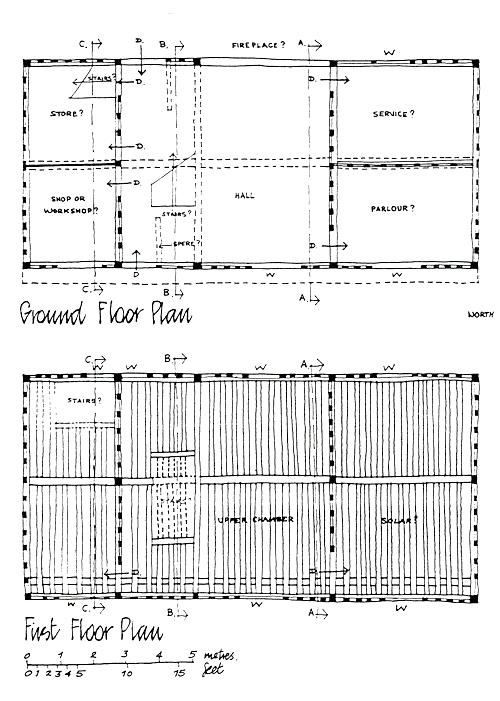
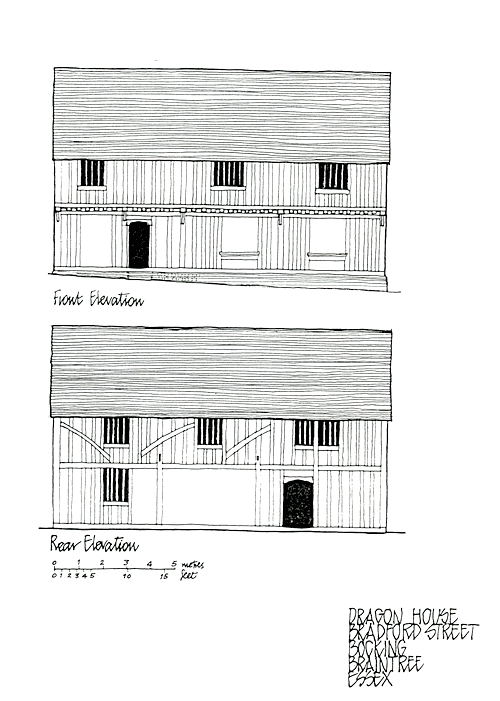

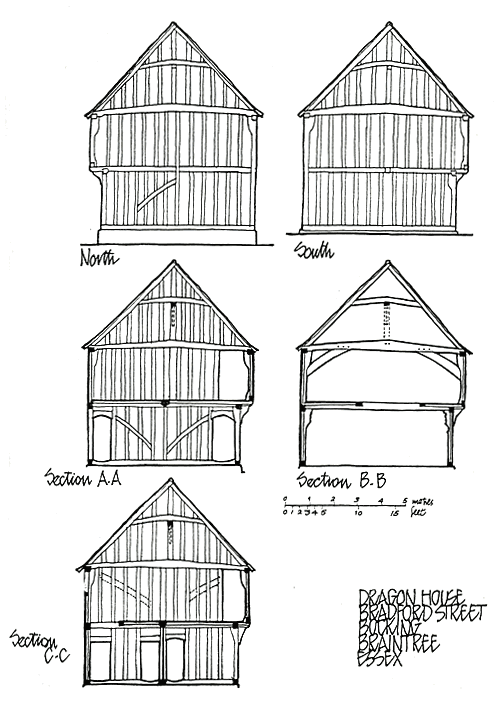


No. 43
This shows an early attempt at conservation, as the house was built by Land Courtauld in the 20th century and was designed to copy and blend with the style of other houses in the street.

Friars Lane
Earlier historians referred to this as Harrison’s Lane after a grocer who occupied the shop at 61 Bradford Street. At one time the Lane had a malting which was later occupied by the council as a warehouse and has since been redeveloped as a series of late 20th century houses. The brook at the west end fed both the malting and the former King's Head Inn at 52 Bradford Street. At one time this brook ran along Friars Lane into Bradford Street and further down ran into Phillips Chase and away.

Nos. 63 to 73
This group appear to have been constructed at the same time but this external appearance is deceptive.
Number 63, a bakers shop for many years has a dado of elaborate linen fold panelling, said to have come from Bocking Church in 1855.
The former shop premises at 65 are later than 67-69. Number 65 has some timbers of considerable size, most notably at ceiling height on the wall adjoining number 63. Tree ring dating of timbers in 67-69 suggests it was built in 1354 or shortly thereafter. Much of its original construction is unaltered even today. The size and quality of the timbers indicate that great expense was incurred when the house was built.
The first floor of 67-69 was constructed as an undivided space. Number 69 has a gothic style window on its northerly wall but only visible from inside the property. The crown posts in the roof are particularly fine.
Numbers 71 and 73 are also later having been constructed abutting the external end wall of no. 69 at first floor level whilst the way through from the street to the back yard is formed beneath the jettied end of no 69.
Number 63 was already a bakers in the first census record of 1841 and continued to be so after the census of 1911 when Harry Bearman was the resident baker. The carved mantle and linen fold panelling described in 1906 has disappeared.
Number 67 was a boot and shoe makers in the 19th century, owned and run by the Sewell family who continue to own the house into the 2020’s.







No. 75
The consensus from various inspections dates this house to the 14th century. with additions dated to the 18th century, 19th century and 20th century. The roof has arched braces to a central truss supporting a crown post with a mouldered cap and base. The first floor level appears to have had no internal partitions suggesting that it might originally have had some non-domestic use. At first floor level on the south elevation is a 14th century two-light ogee-headed tracery window. These were the height of fashion in court circles about 1360 suggesting that the owner was wealthy. In the second half of the 19th century there was a boot makers shop in the NE corner which doubled as the post office.




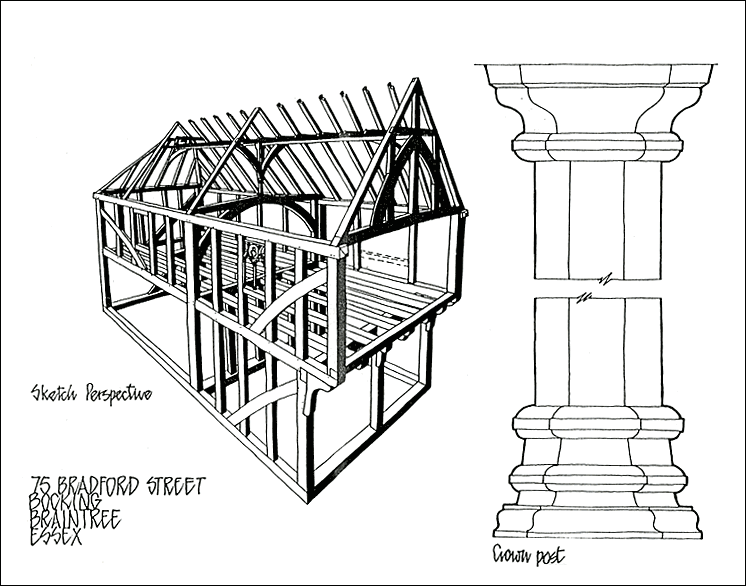

Woolpack Lane
The Cottages on the right hand side in the picture are found on the first detailed map of the street made for the “Nockold Survey”. The middle cottage, Weavers Cottage, was owned by Pasfield Senior, a builder who owned what is now Nos. 19 – 23. The Victorian terrace on the left hand side replaced earlier properties owned by the Nottage family of Fulling Mill House.
This is a small mid-15th century building, extensively altered in the 16th and 17th centuries. The west bay is a 17th century extension, and the east bay is also largely rebuilt in the 17th century. The centre bay is mostly original with original window heads remaining. A good 15th century crown post roof above, with simple short two armed posts. The external plaster on the original west gable remains, and features an unusual “dimpled” surface.
The earliest information begins with the 1803 Nockold Survey.
1803 Nockold survey (Copyright © Essex Record Office);
Properties: 459, 460, 438, 464, 463, 461 lie on Woolpack lane and the survey gives the names of the owners:
459 Thoms Pasfield Senior, Weavers Cottage no. 1
460 Josias Nottidge Jnr, cottage
438 Dr Tweed, a field
464 Josias Nottidge Jnr, a close
463 Josias Nottidge Jnr, cottage and garden
461 Thomas Barns, house
The house of Thomas Barnes and the next door cottage belonging to Josias Nottidge appear to have been replaced by a row of four cottages (nos. 4 – 10) before the 1838 Tithes record.
1838 Tithe Map (Copyright © Essex Record Office)
Properties: 860, 861, 862, 863, 755, 865, 869, 867 lie in Woolpack lane and the record gives both the names of the owners and occupiers:
860 Oliver Gosling, cottage, 1 Woolpack Lane, occupied by Jemima Williams & others
861 Oliver Gosling, cottage, 3 Woolpack Lane, occupied by Catherine Green & another
862 Sara Joscelyne, garden occupied by Catherine Green
863 Sarah Joscelyne, garden occupied by William Ridley
755 Josias Nottidge, pasture
865 Josias Nottidge, garden occupied by John Medcalf
869 Josias Nottidge, house (85 Bradford St) garden and factory occupied by Joseph Hubbert
867 Oliver Gosling, Woolpack (77-81 Bradford St) and cottages site of 4 – 10 Woolpack lane
In the 1841 census there were six households listed in Woolpack Lane:
Mary Wilden
William Easter Bricklayer's Labourer
Eleanor Willis Laundress
Thomas Willis Agricultural Labourer
Abraham Medcalf Agricultural Labourer
Samuel Rankin Agricultural Labourer
In the 1851 census there were six households listed in Woolpack Lane:
William Easter Journeyman Plasterer
Thomas Willis Pauper
Sarah Turner Charwoman
Samuel Rankin Pauper
Sarah Andrews Pauper
Edward Gentry Journeyman Whitesmith
At some point after the tithe record the local builder Thomas Passfield (Jnr?) had acquired two cottages in the lane and these were put up for sale in 1854 after his death.
This advertisement appeared in the Essex Herald 14th Feb 1854:
“DESIRABLE FREEHOLD PROPETY, Situate in the very best part of BRADFORD-STREET, BOCKING, TO BE SOLD BY AUCTION, By J. Joscelyne, On Thursday, February 23, 1854, at the Horn Inn, Braintree, at Three for Four o’Clock in the Afternoon, by direction of the trustees of the will of Mr. Thomas Passfield deceased. Lot 2 comprises TWO COTTAGES, abutting on the Woolpack Lane, in Bocking, let at the rents of £6. 19s. per annum.”
There were two property sales in 1855, the first property as yet not identified was advertised in the Essex Standard of 13 April 1855, the second being the property identified as 867 in the tithe record and identified as four cottages was put up for sale after the death of Oliver Gosling and advertised in the Essex Standard of 2 May 1855:
“Freehold Cottage, Bocking. To be sold by auction, by John Joscelyne, on Tuesday, the 24th day of April, 1855, at the Horn Inn, Braintree. A substantial newly erected brick-built COTTAGE, detached wash-house, and garden, situate in Woolpack Lane, Bradford Street, Bocking; in the occupation of William Alefounder, at £5..10 per annum
Messrs. Alfred May & Son & Samuel Newman, (who are jointly employed on this occasion), at some time in the Month of May next, by direction of the Trustees for sale named in the will of the late Mr. Oliver Gosling. . . A timber-built and tiled Messuage, in four tenements, with Stable adjoining, situate in the Woolpack Lane, Bocking, in the occupation of Hunwick, Turner and Ardley.”
The 1861 census does not identify the properties but the following persons most probably lived in Woolpack lane:
Caroline Gentry Crape Finisher
John Willis Railway Porter
Elizabeth Easter Plasterers Wife
John Collins Chelsea Pensioner
William Hunwick Cleaner of Machinery
1871 census identifies the inhabitants of Woolpack lane:
James Oliver Carpenter (journeyman)
Jane Collins Pauper
Jeremiah Layzell Timber Sawyer (unemployed)
Thomas Williams Ag Lab
One uninhabited, used as a hemp warehouse by Wm Adkins & Co - Hemp & Mat Manufacturers
William Dowsett Cocoa Matting weaver at the Hemp & Mat factory
Charles Alden Silk Weaver at the Braintree silk factory
William Earl Ostler at an inn
William Alefounder Bricklayer (journeyman)
Buildings (2) used for the purpose of stables, piggeries and slaughter houses (by Mr Jos Gentry)
William Easter Bricklayer (journeyman)
John Willis Railway porter and messenger
1875 OS map (Copyright © Essex Record Office)
As revealed by the 1871 census there were more dwellings in Woolpack lane sometime in the 1860s and comparing the above OS map from 1875 with the tithe map from 1838 we note he following changes:
No. 861 on the tithe map appears to have been replaced by a new building
No. 862 on the tithe map has been replaced by a row of cottages.
No. 867 on the tithe map has been partly demolished or rebuilt as the four cottages put up for sale as part of Oliver Gosling’s estate as indicated above in the sale details from 1855
1881 census lists the following inhabitants of woolpack Lane, by comparison with the censuses of 1871 and 1891 there appear to be 2 or 3 properties unaccounted for:
Eliza Alefounder
Charles Mumford Crape finisher
William Earl Crape finisher
Samuel Catt Tailer
William Dowsett Mattings Mat Weaver
Sophia Butcher Silk winder
Alfred Porter Labourer
uninhabited
James Leader Brick maker
Ellen Willis Silk winder
Thomas Williams Ag Lab
From the Essex Standard 7 July 1883 we have the following report of a fire at the home of the Williams:
“Fire. – A fire broke out on Saturday last at a cottage in Woolpack Lane, Bocking, which but for the presence of mind of a man named Rush might have assumed serious dimensions. The cottage is occupied by an aged couple named Williams, and as Mrs. Williams was lighting a fire a quantity of soot became ignited and fell into the room, setting fire to some furniture. The old woman became alarmed and ran out of the house, leaving the door and window open, and the fire was rapidly gaining power, when Rush fortunately came to the rescue, closed the door and window, and took prompt means for arresting the progress of the flames. But for his aid it is probable the whole range of cottages would have been destroyed. They are old and inflammable, and are also adjacent to more valuable property.”
1891 census for Woolpack lane lists the following inhabitants, four of whom appear in the 1881 census:
Stephen Rayner Carpenter
Ellen Willis Widow
James Millbank Ag Lab
Abraham Ager Groom & Gardener
Jane Unwin Widow, Midwife Sick
Eliza Halefound (sic) Widow
William Barlap Bricklayer
Chas Munford(sic) Crape finisher
William Dowsett Mat Maker
Sophia Butcher Silk winder
Elizabeth Stewart Washer woman
Sarah Cook Charwoman
Edward Gooday Mat Maker
1901 census for Woolpack Lane lists the following inhabitants:
Edward A Goodey Cocoa Fibre matting weaver
uninhabited
Elizabeth Stewart Parochial allowance
uninhabited
Sophia Butcher Silk Winder
William Dowsett Fibre Mat maker
Charles Mumford Crape Finisher
William Bartrup Bricklayer
Herbert Rudkin Painter
Arthur Willis Stoker in silk factory
Walter H Barker Worker in Grindery
uninhabited
Stephen Reyner Carpenter
2 uninhabited
1911 census for Woolpack Lane lists the following inhabitants:
Harry Cook Sugar boiler
Richard Thomas Harris Journayman Baker
Abraham Ager OAP
Walter Barker Released from army
Arthur Willis Labourer
Major Butcher Matting Weaver
Emma Bartrup
Charles Mumford Examiner silk factory
William Dowsett Mat maker retired
Sophia Butcher Parish relief
Emily Coppin Parish Relief
Sarah Smith Factory Hand retired
Edward Chopping Engine driver Threshing(?)[l1] Machine
1919 OS map (Copyright © Essex Record Office)
The Adkins Ashley & Co mat manufacturers based at 85 Bradford Street has by 1919 built a large factory premises on the plot of land identified as 865 on the tithe map.
By 1895 Harry Golding had become involved in the Ashley Adkins & Co business, the Kelly’s Directory of that year listing the telegram address of the company as “Golding”.
There had been a minor fire at the mat factory in 1895 as reported in the Essex Herald on the 9th July:
“A narrow escape from a serious fire was experienced at Messrs. Ashley Adkins and Co.’s mat manufactory in Bradford-street, when, owing to the boiling over of some heated tar, a summer-house and a fence communicating with the factory building were burned. The flames were arrested by the prompt action of the workmen.”
Another fire at the factory as reported in the Essex Chronicle 20 Feb 1914:
“Bocking Mat Factory, owned by Messrs. Ashley Adkins and Co., and situate in Bradford Street, near Braintree, was destroyed by fire. The damage, which is covered by insurance, is estimated at £5,000.”
Following this fire the premises were rebuilt.
It appears that the factory caused environmental problems as the following report from the Chelmsford Chronicle of 10 June 1921 highlights:
“A Bocking Problem. – The Inspector reported on efforts to remove a very old drainage trouble at Woolpack Lane, Bocking, where a spring of water flowed into a sewer. – The Surveyor suggested that the spring water should be diverted from the sewer, and a different method of flushing put in a Bocking mat factory. – Mr. H. W. Golding, of Messrs. Adkins, Ashley and Co., wrote that the supply of had been to the factory for fifty years, and he could not agree to the diversion. The lavatory accommodation in the factory was carried out under the direction of the Council. – The Clerk said the Council had to pay £45 compensation to a householder in Woolpack Lane because the house became flooded with sewage from the drain, and unless some steps were taken there was danger of a recurrence. The water could not be diverted from the mat factory. – Adjourned for further enquiries.”
1938 Chelmsford Chronicle 8th July, following the death of Mr. Harry Golding the trustees of the estate advertised the sale of the property portfolio. Included in the sale are Bay house and The Woolpack in Bradford Street, No. 2 Woolpack Lane, the cottages Nos. 4 – 10 Woolpack Lane and a large timber and tiled building in Woolpack Lane presumed to be the mat factory.
The Chelmsford Chronicle 15 July 1938, carried an advert for a number of cars available for sale at the Chapel Garage, Woolpack Lane, Bradford Street, Bocking. The 1958 map (below) has an extra building across the lane from what was the mat factory. In the absence of any further evidence this is taken to have been a chapel then used as a garage by Mr Cook from no.2.
1939 Register
2 Woolpack Lane, Agnes Cook, widow
4 Woolpack Lane, Ernest Millbank, Machine minder
6 Woolpack Lane, Frederick Nichols, Farm Labourer
8 Woolpack Lane, William Mitson, Chauffeur, gardener
10 Woolpack Lane, Harry Gray, Butler
15 Woolpack Lane, Rose Butcher, widow
13 Woolpack Lane, George Rufford, Crane driver
11 Woolpack Lane, Alice Saward, widow
9 Woolpack Lane, George Rogers, Crape Crimper
1 Woolpack Lane, Ernest Harries, General Bricklayer
Note that Mrs Cook is now a widow. Her husband’s garage business, conducted at the Chapel Garage is closed down and with the outbreak of the Second World War Sir William Courtauld, who must be the owner of the old chapel, offers it to the Air Cadet Corp according to a report in the Essex Newsman 21 Oct 1939.
“Air Cadet Corps. – The Braintree Squadron have taken up their headquarters in a former chapel at Woolpack Lane, Bocking, which has been let to them on advantageous terms by Sir William Courtauld. A subscription in aid of the Corps funds exceeds £150. Sixty cadets have been enrolled, and they purchase their own uniform and subscribe 3d. per week to the squadron expenses. Mr. L. R. Hurry, who was an aircraft rigger in the last war, is supervising the internal decorations and painting at the headquarters, and an aeroplane engine and fuselage are expected from the Air Ministry. Dr. J. H. Dixon, a former R.A.F. officer, has accepted a commission in the Braintree squadron, and succeeds as Medical Officer Dr. D. M. Anderson, who recently joined the R.A.F. Flight-Lieut. Hamilton Joscelyne, who served for a short period in the R.A.F. during the last war, is acting-commander of the Braintree squadron. Mr. G. A. Gage has been appointed a flying officer, and has presented the squadron with its flag.”
After the war, the old mat factory premises were redeveloped as a new factory building; no longer a timber and tiled building.
Lignacite (East Anglia) Ltd., started there but the business did not last very long as revealed by the following newspaper adverts and Legal Notice:
Chelmsford Chronicle 27 June 1947:
“Work in Braintree: General Labour required for new building materials factory. Apply, Liquacite (sic) (East Anglia), Ltd., Woolpack Lane, Bradford Street."
Chelmsford Chronicle 7 Nov 1947:
“Farmers : A new Building Material, strong yet light ; easy to work with – can be sawn, drilled nailed, or bolted – as timber, pleasant to look at ; no permits needed. Apply, Lignacite (East Anglia) Ltd., Woolpack Lane, Bradford Street, Braintree. Tel. Braintree 838.”
Chelmsford Chronicle 5 Dec 1947:
“A new building block, strong, yet light ; easy to work with ; can be sawn drilled, nailed, or bolted as timber – pleasant to look at ; no permits needed. Apply, Lignacite (East Anglia), Ltd., Woolpack Lane, Bradford Street, Braintree. Tel. Braintree 838.”
Chelmsford Chronicle 29 Oct 1948:
“Lignacite (East Anglia), Ltd. Notice is hereby given pursuant to Section 293 of the Companies Act, 1948, that a meeting of the Creditors of the above named Company will be held at the Horn Hotel, Braintree, Essex on Monday the first day of November 1948 at 11.30 o’clock in the forenoon for the purpose of having a full statement of the position of the Company’s affairs, together with a list of the Creditors of the Company and the estimated amount of their claim laid before them. AND NOTICE IS ALSO GIVEN that for the purpose of voting, secured Creditors must (unless they surrender their security) lodge at the Registered Office of the Company at Woolpack Lane, Bradford Street, Braintree, before the Meeting a Statement giving particulars of their security, the date when it was given, and the value at which it is secured.”
1958 OS map (Copyright © Essex Record Office);
In 1950 another company, Thames Valley Moulders, took over the premises and started hiring a workforce as indicated by a number of adverts in the local press.
Chelmsford Chronicle 14 April 1950:
“Maintenance Fitter; Young man 25 / 30 yrs. Keen and ambitious, required to join new company with extensive prospects: immediate prospects are for position of machine foremen; the work will be on the most modern plastic moulding machinery & dies; the right man need not be experienced in the work but must be a craftsman; overtime essential; good wages commensurate with experience. Apply in writing or personally after April 17th to Works Manager, Thames Valley Moulders, Woolpack Lane, Braintree.”
Chelmsford Chronicle 14 April 1950:
“Male Clerk; The Thames Valley Moulders are now about to open in Braintree. The firm is engaged on plastic mouldings. A General Clerk is required to take care of wages, P.A.Y.E. and general officer routine. For the right man the position of office manager will eventually be possible. Salary commensurate with experience & ability. Apply in writing to Director, Thames Valley Moulders, Woolpack Lane, Braintree.”
Chelmsford Chronicle 26th May 1950:
”Secretary; Competent & fully experienced Lady Secretary required by Managing Director of Manufacturing Company in Braintree . Salary commensurate with experience & ability. Apply in writing to Thames Valley Moulders Ltd., Woolpack Lane, Braintree.”
Chelmsford Chronicle 4th August 1950:
“Men wanted at Thames Valley Moulders, Braintree as Machine Operators; no previous experience necessary; alternate shifts, night and day, changing every fortnight; overtime required to be worked; average wage, with bonus and overtime, can exceed £7/10/- per wk. Apply in person to Works Manager, Thames Valley Moulders, Ltd., Woolpack Lane, Braintree.”
Chelmsford Chronicle 19th August 1950:
“Clerk Wanted, male or female, under 25; Knowledge of bookkeeping an advantage. Write, giving details of age, experience, etc., to Thames Valley Moulders, Ltd., Woolpack Lane, Braintree.”
Chelmsford Chronicle 10th November 1950:
”Technical Assistant to Works Manager reqd., at new Plastics Works in Braintree; suitable for a young technician anxious to rise to executive position; the work will consist essentially of the promotion of new items on manufacture to mass production assembly lines; previous knowledge is not essential, but a flair for small jigs would be an asset. Apply in writing, stating age and experience, to Managing Director, THAMES VALLEY MOULDERS, Woolpack Lane, Braintree, Essex.”
When Musical and Plastic Industries was founded in 1953 Selmer became one of the subsidiary companies. The Selmer subsidiary was the UK offshoot of the French company Henri Selmer Ltd which had been created in 1928. They concentrated primarily on licensing, importing and distribution rather than manufacturing, and by 1939 had grown to become the largest company in the British musical instrument industry. In 1935 they began manufacturing sound reinforcement systems and began manufacturing electric organs in 1951.
Thames Valley Moulders appears to have undergone reorganisation with Selcol Products Ltd operating as a subsidiary from 1953 to 1968. Selcol made a range of toys, vinyl records and musical instruments for children. Record labels included Gala Goldtone, Gala Nursery Records, Gala Records and the Selco Nursery Record series.
In 1958 a Midlands company, W. Abbot and Sons, acquired Thames Valley Moulders in exchange for 1,100,000 ordinary shares at 1/-(one shilling) each and changed its name to Musical and Plastics Industries.
The Birmingham Daily Post 25 Feb 1964 ran two stories on the Selco subsidiary of Musical and Plastics Industries with the same text under two different headlines; “Sweet Music” and “Profiting from the Beatles”:
Musical and Plastics Industries subsidiary, Selco Products, is manufacturing and delivering Beatles guitars at the rate of 120,000 per month. It is also manufacturing the “Ringo Starr snare drum outfit,” demand for which is said to be tremendous.
Selco Products has acquired exclusive world rights to the Beatles name in connection with these guitars and drums and also record racks. It has just completed a licensing agreement with America’s largest guitar manufacturer and is also completing a similar agreement with one of France’s biggest plastics manufacturers.
Selcol manufactured the much sought after 'Beatles' toy guitars and drum kits at their factory in Braintree, Essex; pristine examples now cost hundreds or thousands of pounds. They made substantial profits in 1964 paying a dividend of 47 ½ % but sales plummeted as the novelty wore off.
The Beatles Selcol Junior Guitar On Original Backing Card (UK)
£3,500.00 (in 2020)
In 1965 the Birmingham Daily Post on 10 September reported on the acquisition of Fairchild Plastics by Musical and Plastics Industries for £100,000. Fairchild Plastics had in two years become a substantial maker of plastic injection and blow-moulded toys, the managing director, Mr. Bertram Collins had five year before, been general sales manager of Selco.
The purchase of Fairchild in 1965 aggravated the slump in sales and Fairchild made a loss rather than the expected profit forecast at the time of the purchase. This resulted in an interim dividend of 15% in the first half of 1966 and no final dividend. A second deal, with the private company Roylat Holdings, about the same time also turned sour further draining the company’s cash resources when they had to write off £52,000. The company laid off 1/3 of its workforce. Restructuring also involved a change of name to MPI.
With the decline of Selcol products in 1967 MPI decided to shut the Selcol production in Braintree. Plastics production ceased in 1968 and MPI sold the premises to Selmer who moved their organ and amplifier production from three sites in the Charing Cross Road area of London. Most of the plastics production workforce left but a number of women from the production lines stayed in and retrained to manufacture the amplifiers.
To begin with Selmer were very successful but from 1972 the business started to fail, production ceased in 1979 and by 1980 there was one employee left to turn out the lights. Selmer used the old chapel building to store returned, faulty goods which never got repaired and there was much criticism about the way the operation was being run.
Following the closure of Selmer the premises remained empty and were demolished in the 1990s to make way for the modern housing that now occupies the site.
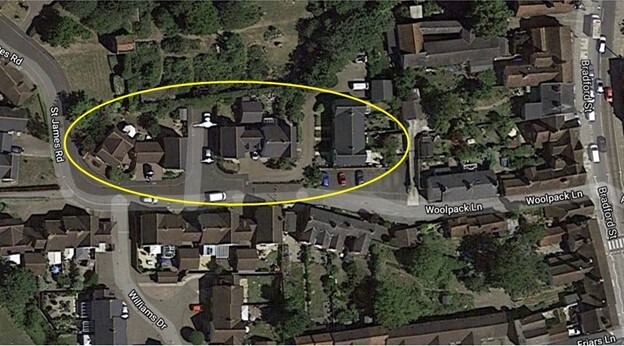

No. 77, 79 and 81 "The Woolpack"
With its striking array of gables the old Woolpack Inn is one of Bradford Street’s most iconic buildings. The two end wings were built circa 1590 and the central section circa 1660. The bay window on the left side is an original Elizabethan one and the fixing holes for the first storey window of the same period can also be seen. The carvings on the bressumers are particularly fine. Above the bressumers there are the remains of pargetting. Inside there are two late 16th century doors and some good 18th century cupboards. Facing Woolpack Lane the rear extension is the remains of an earlier building circa 1450. It consists of two bays and most of the original frame, but the roof was rebuilt in the late 16th century. Owned by Jeremiah Brock in the late 18th century and bequeathed to his son-in-law Josias Nottidge one of the prominent clothiers.
Of late-16th century crosswing construction, with a fine arch-braced to side-purlin roof. The first floor joists are deep section, approximately 6” x 3”, with diminished haunches and housed soffit shoulders. There are good early-18th century cupboards, and two original late-16th century doors. The property also has original windows to front. The rear extension is, in fact, the remains of an earlier building, circa 1530. Two bays and most of the original frame remains, but the roof was rebuilt in late-16th century.
An entry in Joseph Savill’s diary from 1759 reads “Very high wind as ever i knowed blew down Aunt Larkin’s Chimneys down at ye Woolpack.”
Over time the property had many owners.
In 1806 Oliver Gosling, owner of the Bocking Brewery, acquired the property. It ceased to be an inn in 1851 although it remained in the Gosling family until 1878.
Hannah Gosling bought out the other beneficiaries in the property in 1855 after the death of Oliver Gosling. The sales particulars were:
A very substantial Freehold timber-built and tiled messuage with double tenement, adjoining same; Extensive stabling, shed, and piggeries, pump and well of excellent water, large yard, and productive garden, with an entrance thereto from the Lane, formerly known as the “Wool-pack Inn” but now occupied as private dwellings, in the several occupations of Smith, Amos, Willis and Easter; the remaining part is unoccupied, £26-10-0 per annum. This lot has a frontage of 66 feet, next the road, and 187 feet in depth. Land tax upon this and Lot 8, £1-10-0, which is to be apportioned.


















No. 83 Bay House
This Regency house, built about 1800, takes its name from the coarse woollen fabric known as Bocking Bay, which was produced by Jeremiah Brock in a bay factory at the back. It was probably built by Josias Nottidge, Brock’s son-in-law, on the site of 3 cottages inherited from Brock. The wife of one of the subsequent occupiers sold "sweets, fruit and stiff slices of rice pudding" to day school pupils at the school across the road.
The Robinsons lived here, appearing in the 1861, 1871 & 1881 censuses. From the video or A Walk with Henry we are told “Mrs Robson made sausages and sold sweets and fruit and rice-pudding, which she cut into stiff slices, and the school day scholars (from the boarding school across the street) bought it for their dinner, the boys came long distances walking from the villages around.”









No. 85 & 85A "The Mattings" and "Jute House"
85 and 85A was built as a single 15th century or early 16th century timber framed and plastered house of L-shaped plan with wings extending towards the N and W. The upper storey is jettied with 20th century restoration of a carved bressumer and panels of 20th century ornamental plasterwork. The roofs of both wings have cambered tie beams, queen posts and central purlins with curved struts. Queen posts are relatively rare in Essex but common in Suffolk. The interior has some original features. A lease from 1757 refers to a wool hall, formerly a stable, with chamber over the same, next to the messuage. In 1803 it was owned by Josias Nottidge and was leased to the Hubberts, the last of the clothiers. The Hubberts were eccentric Quakers who tried perpetual motion. In 1832 they turned the business from woollen manufacture to manufacturing hempen cloth, rope, twine and mattress manufacturing, hence the names.
A 1644 lease on Wentworth House (No. 87) refers to the property as Bullens formerly occupied by Francis Hawkins.
The front block (early 16th century) appears to be 30 years earlier than the rear wing, described in a lease of 1757 as a wool hall, formerly a stable, with chamber over.
Inside the building, on the ground floor, the rooms of the N. wing have original moulded ceiling-beams with carved stops. On the first floor there is a similar beam. In the West wing is an old door of moulded battens.
In the roof three descriptions vary in as much as one describes a square crown post, another describes a king post and the third a queen post (if you know the difference between these please use the Contact Page to let us know).
The Nottidges inherited the property from Jeremiah Brock and sold it in 1844: -
The Hubbards were Quakers and the last clothiers in the area, they cease cloth production in 1832, their business finished off by the effects of the war and the fact that they could no longer compete with the much cheaper cloth now being turned out by machinery in the mills of Yorkshire, according to W.F. Quinn in his 1980 book A History of Braintree and Bocking. Joseph Hubbard was also eccentric and had a try at inventing perpetual motion. From A Walk with Henry we learn that some wags played a trick on him by winding a reel of cotton on his machinery and pulling the thread so as they went away they heard him say ‘I have got it, I have got it’, much to their amusement.
Following the demise of the clothier business the Hubberts became Hemp Manufacturers producing rope, mats, matting and mattresses, the business being taken over by Ashley Adkins and afterwards by Harry W. Golding. The business was still appearing in the Kelly Directories as late as 1914.
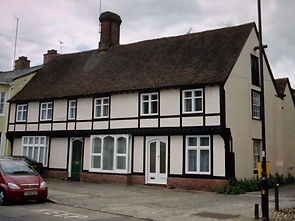
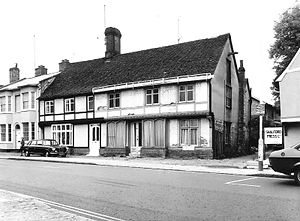



No. 87 "Wentworth House"
The heavy mullioned windows in the south wall suggest a date of the second half of the 14th century for the southern bay which is not perpendicular to the street. The two principal jettied bays are typical of a mid 16th century town house, and the fine central fireplace may date from 1550, and seems to have been built for a single storey hall. The present two storey structure was built some years later. The shell hood door canopy dates from the late 17th century. During the later 19th century it was sub-divided into three tenements, renovation commenced in 1967, and after changing hands several times is now restored to its former state. Behind the house is an ancient iron gateway which once stood at the entrance to Queen's Meadow, and now leads on to an 18th century walled garden with a two storey summer house. This house was formerly in the ownership of the Maysents, Jeremiah Brock and the Nottidges, all prominent clothiers in their time. Previously called Wordsworth house it was a ladies boarding school in the mid 19th century run by Sarah Boosey.
It is of L-shaped plan, with the wings extending towards the N. and W. On the E. front the upper storey projects, and there are three gables; two of them project; over the doorway is a richly carved ' shell ' canopy, of late 17th century date, resting on brackets, elaborately carved with cherubs' heads. The 1st storey has three 18th century double hung sash windows with glazing bars, in flush cased frames, two later sash windows with vertical glazing bars and small casements flanking the central window. There is a rainwater head with a date of 1859, presumably the date of a major renovation.
The southern bay is not perpendicular to the street and is of the 14th century. The heavy mullioned windows in the south wall suggest a date of the second half of the 14th century and a crown post roof of 14th century type and style. This bay has a mainly lodged floor framed with unrefined tenons; the southern top-plate of this wing shows a long stop-splayed and bridle- butted scarf of about 1355. Tripartite windows were formerly built in the E. Gable, with hollow chamfered mullions.
A two bay building was added to this southern wing which has 2 façade gables and a long wall jetty to the E. The first floor fireplace, once plastered, is dated in the southern spandrel: 1615.The first floor is framed with binding – and bridging-joists, the common-joists having diminished haunches. The N.E. windows have ovolo-mullions, scribed at head and feet, tripartite. Inside the building, on the ground floor, the middle room has a wall-post with a shaped head; the fine central fireplace may date from 1550, and seems to have been built for a single storey hall, another room has an original fireplace, one doorhead, in the North Partition, ground-story, is a late, flattened and re-curved four-centred arch. The fine richly carved shell canopy, is of particular interest due to its 17th century date resting on brackets, elaborately carved with cherubs' heads, etc.
The earliest deed to the property dated 1633 indicates the property was owned by Francis Hawkins, clothier, leasing the property to William Stacye the younger, also a clothier for 10 years. The property had previously been owned by George Rayson. In 1644 Hawkins re-leases to property to William Stacye who by hi death in 1656 owns the property. In 1684 the property is acquired by John Maysent, the younger, clothier. By 1803 the property is owned by Josias Nottidge Jnr. When put up for sale by the Nottidges in 1844 Sarah Boosey was an under tenant to Mr John Medcalf. It is possible that Sarah Boosey bought the property in 1855 when she inherited a sum of money from her father. Sarah Boosey ran a girls boarding school on the premises until her death in 1878.
From 1891 to 1902 Edwin Spencer lived here and the house was called Wordsworth house.
In the 1930s a boarding house operated on the premises.
The fittings and utensils of a corn dealer were put up for sale in 1942.
Any further details gratefully received via our Contact Page.














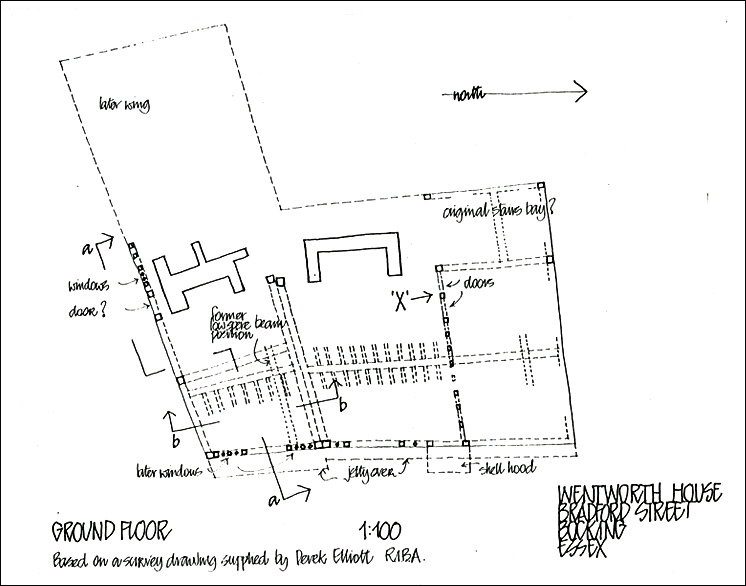

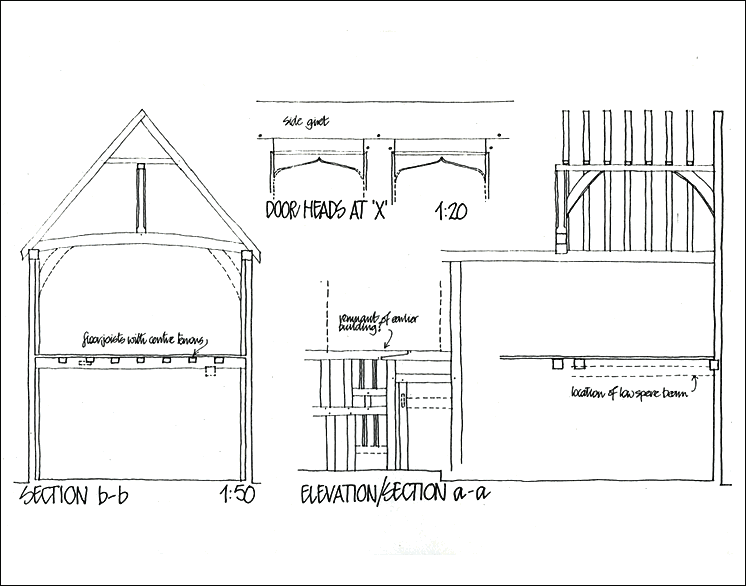
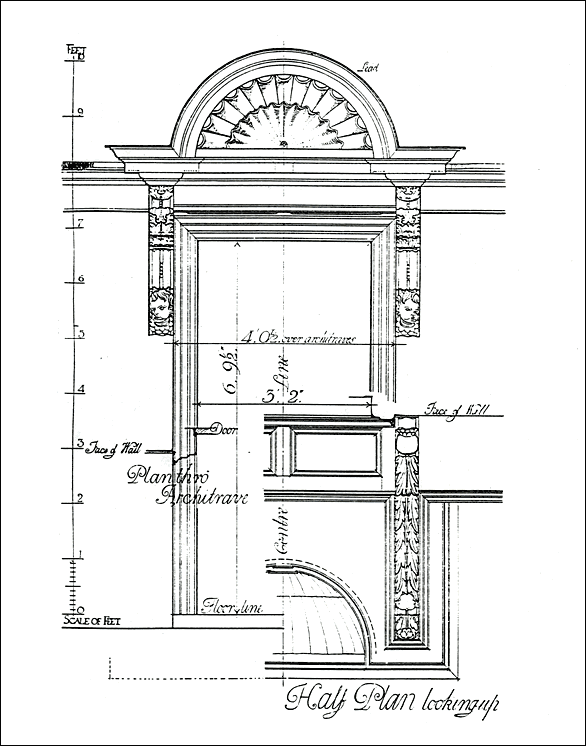





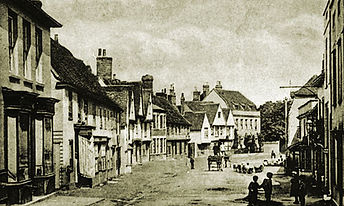


No. 89 "Maysent House"
The earliest parts of the building are 15th century or 16th century with alterations in the 17th century and 18th century, most notably the 18th century brick façade. Note the 19th century cast iron balcony on the north wall. Extant deeds from the 17th century show that it was owned by a succession of clothiers. By 1668 it was leased by William Daniel, another clothier, and stayed in the family for 5 generations. By 1723 it had become the Queen’s Head public house. In 1723 the will of John Maysent, as lord of the manor, placed a rent
charge on the Queens Head to pay for the maintenance of his son’s family tomb in Bocking churchyard. In the mid 18th century a wool hall was erected. The Savill diaries record that on 8 Nov 1788 the body of Lord Nugent, who had died in Dublin, lay in state in the Queens Head for one night on the way to be interred at Gosfield. It ceased to be a public house in the early 19th century and became the home of the local doctor. In the late 19th century the Victorian artist and portrait painter William Hayden Fuge lived here.
The dating of the rear, early, wing is uncertain; different descriptions fail to agree as to whether it is 15th or 16th century without any specific construction details to support the case.
The dimensions of the beams in the west wing would seem to indicate a 15th century date.
Likewise, a series of early deeds, with some overlap of names found in other documents, may belong to former buildings on the site of the cottages lying to the north of Maysent House; specifically the Daniell family (see below) feature prominently.
Similarly there are differences in the description of the type of establishment the Queens Head was. One author tells us it was a carrier stage on the London-East Anglia route whilst another tells us it catered to the ‘slow’ trade, i.e. the local trade.
The earliest document which is attributed to Maysent House is the 1723 will of John Maysent, who as lord of the manor, placed a rent charge of 40 shillings (two pounds) per year on the Queens Head inn for the maintenance of his son’s family grave in Bocking churchyard.
The 1733 will of William Daniel, innholder specifically identifies the Inn called the Queens Head.
The 1756 will of John Daniell devises the inn called the Queens Head, with newly erected wool hall, stables, yard etc. to son William.
1788, an entry in the diary of John Saville “1788 Nov 8. Lord Nugent was brot from Dublin where he died through Bocking to be interred at Gosfield. Lay in state one night at the Queenʼs Head here.” Robert Craggs-Nugent, 1st Earl Nugent, born Westmeath, Ireland c 1702 died 13 Oct 1788.
1803 Owned and occupied by Josias Nottage.
1838 Owned and occupied by Dr Samuel How Tweed.
Following the death of Dr. Tweed’s widow his daughter entered into a marriage of convenience with the artist William Haydon Fuge who had been living at no. 37. William Haydon Fuge, born in Somerset about 1818 and died in Bocking in 1892, was an artist of some repute. A search on Google will find images of a number of his works (see examples in the images for no. 39). The Essex Record Office holds his papers and accounts. A portrait of the Mayor of Wrexham by W H Fuge hangs in the National Portrait gallery. In the first half of the 20th century the house was owned and lived in by Arthur Reginal Vaizey.





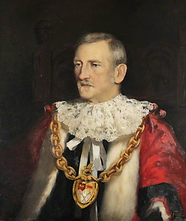




Queens Meadow
The house, Queens Meadow was described by Nicholas Pevsner in his “Houses Of England: Essex” as "Queens Meadow by HH Jewell for WJ Courtauld, 1929. Exposed brick plinth and dressings, otherwise rendered, modest but good quality." The brickwork as seen around the doorway was exposed around the house, as shown in the photo from the 1950s. The 1/5 acre plot originally belonged to the nearby “Queen's Head” public house (now Maysent House, next door) and was often used to graze horses from the coaches arriving at the many inns in Bradford Street. It included an extensive wooded area and vegetable plot, that area now containing houses on St. James's Road.
Original features such as the splendid oak door, the wrought iron lantern, the heart-shaped front flower bed and servants multi-room bell-call system remain. There are original Crittall metal windows (rare lead-lights with “winding” openers) throughout, including the original conservatory (thought to be one of Crittall's first and a rare survivor). The upper of the three floors on the north side was a self-contained domestic's flat, now incorporated into the house as the fifth, en-suite bedroom and a library / music room. The slate-shelved, open-vented “pantry” also remains intact.
The garden retains its original 3-lawn layout, the thatched summerhouse and a small plum, cherry, apple and quince orchard. The three huge lime trees against the front wall feature in many old photos of Bradford Street. The double garage block was unusual for its time, with its massive metal up-and-over doors, again forged by Crittall and their local partners Lake and Elliot.
William J. Courtauld, lived there only briefly. A brick in the doorway arch bears the following inscription: "WJC 1930”. In 1931 it was occupied by Rear-Admiral Shubsole until sometime after 1945 when he move to Colchester. At some point ownership was passed (we believe given) to Valentine Crittall who died at the house in 1961. Lady Braintree, latterly confined to a wheelchair, had a lift installed at the rear of the house to take her to the second floor (since removed).
Sir William Julien Coutauld, was a business man in the family firm of Courtaulds, a UK based manufacturer of fabric, clothing, artificial fibres and chemicals. It was established in 1794 and operated mills in and around Bocking where the local mill employed 2,000 people, originally weaving silk, after the demise of the woollen trade. Sir William was a prominent benefactor gifting a hospital, recreation ground, fountain, town hall and registry office to Braintree.
Valentine Crittall, Later Baron Braintree, son of the founder of Critall windows, was a member of the 1923 Labour Government as the Member for Maldon. He later joined the Conservatives, was elevated to the peerage as Baron Braintree and was a director of the Bank of England. Needless to say Queens Meadow has some very fine Critall windows.
Before the building of Queens Meadow the site had been for almost a century owned by the Queen’s Head, next door after a medieval red brick house that had stood on the site was demolished. The red brick house had been sold by the Nottidge family to the Savills who, in turn sold the red brick building to John Boosey and William Harrington for demolition. It was the iron gates from this red brick house which are now found at Wentworth house.
The Red Brick House.
The 1803 Nockold Survey map shows the outline of a large building on the site now (2023) occupied by Queens Meadow.
The 1638 Will of Henry Edes left his house to son Henry. The 1644 deed of conveyance of Wentworth House, when read in conjunction with this map of 1803 identifies this property as that of Henry Edes.
A 1669 Marriage Settlement of Henry Edes grants a life interest in the “Capital, Messuage and all the Redd Bricke House situated in Bocking Green at Bradford Street in Bockinge, [including] yard, garden, orchard, barn, stables [and] pasture ground called Grass Geik, of five acres.” This document is included in the estate records of the Savill family.
In 1803 the property was owned by Thomas Nottidge and his son the Rev. John Thomas Nottidge sold it to John Savill in 1817 as recorded in John’s diary: “1817 Decr. 24th – I this day bought of the Rev Jns. Thos. Nottidge all the arable and pasture land, containing about fifty acres … together with the mansion house … situate in Bradford Street in the parish of Bocking and opposite to my house in Church Lane, to take immediate possession, for the sum of £5000.”
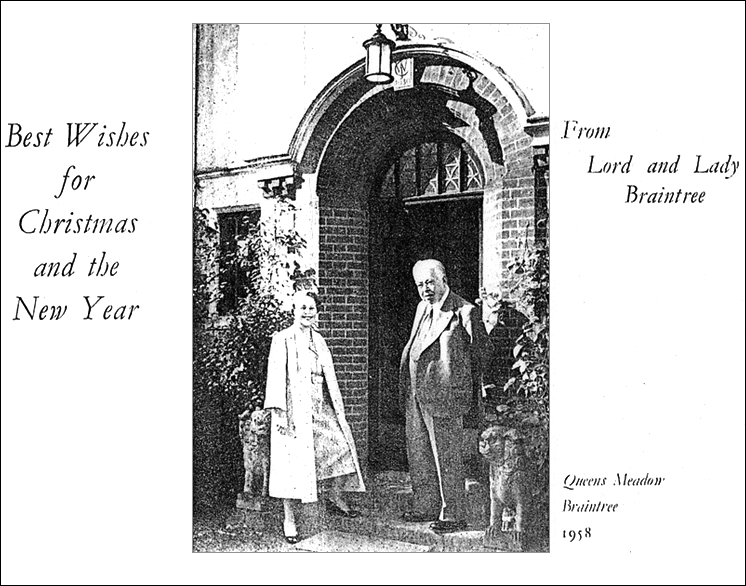




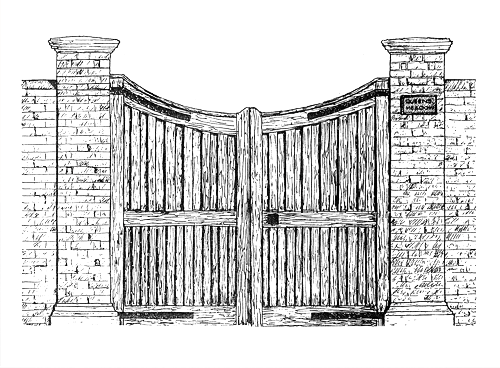

No. 129/135 Former "The Six Bells"
The site of the original Six Bells which was demolished in 1932. From the picture taken during demolition, the roof timbers suggest that the old pub had previously seen extensive renovation.
There is a strong local tradition that the Six Bells, Bradford Street originally was a Church Alehouse. The Chapel of St James was a hospice for pilgrims and was well established in 1503 when William Claryon left the rents from his tenement to pay for mass to be said once a week in the chapel. The row of cottages on the left hand side in the picture above is believed to have stood on the sight of the chapel.
In wills from 1515 and 1517 money was left for the reparation of St James. If the Six Bells was the Church alehouse attached to the hospice and chapel then it must have been in operation before this time. Brisley (1992, pl.5) has published a photograph of the original Six Bells, which certainly appears to have its origins as a late medieval public building, with Victorian modifications and is much older than the inn on the corner in the picture above.
The church alehouse would have provided refreshments to the pilgrims staying at the nearby hospice run by the monks of the Chapel of St James.
Robert Peirs of Bocking appeared at the Essex Assizes at Chelmsford 28 Feb. 1676 for keeping a common tippling house without licence. Robert Peers (Pierce) appears in the 1680 Session Rolls and again in 1681. 1694 Session Rolls: “Recognizance of Jos. Feers Yeoman and Robert Peers victualler, both of Bocking; John Peers to answer John Collin and threatening to him some other bodily harm although he was charged by the petty constable thereof to keep (?the peace towards) Collin. They are agreed.” From the 1699 Session Rolls: “Indictment of Robert Peirce of Bocking victualler, before and since 31 Aug. 1699, kept ill rule in his common alehouse there”. In his will of 1702 Robert Peers gives the Six Bells to his son John. In 1736 Elizabeth Pierce bequeathed the Six Bells to grandson Edmund Peirce. 1748 Marriage Settlement between Robert Gainsborough of Sudbury, clothier and Ann Peirce of Sudbury, wife, concerning “Six Bells” inn in Bocking.
In his will of 1785 John Stebbing sen. Of Bocking, farrier, proved 1789, gives to his son Charles Stebbing his public house known by the name of the Six Bells, occupied by William Casson. 1793 census Mrs. Caton (Cason?) Victualler Sign Six Bells. 1803 Nockold Survey Oliver Gosling, Six Bells. 1848 White’s Directory, Nunn E., Six Bells. 1851 Kelly’s Directory Henry Frost is the landlord. 1855 Kelly’s Directory, Henry Bearman, Six Bells P.H. 1874 Kelly’s Directory, Thomas Pyman, Six Bells P.H. 1882 Kelly’s Directory, Edward Phillip Spicer, Six Bells, P.H. 1894 Kelly’s Directory, Mrs Ellen Bearman, Six Bells P.H. 1912, 1914 & 1917 Kelly’s Directories Frederick W. Pettitt, Six Bells P.H. 1929 Kelly’s Directory Charles Derisely, Six Bells P.H. 1933 & 1937 Kelly’s Directories and in the 1939 England & Wales Register Sydney Hedges was at the Six Bells P.H.
Mike Bardell in Give them Ale enough writes “A Gardener House at the end of the 19th Century, Greene King supplied it from 1902 until closure. However, the premises were owned by A Smith Esq who ran a successful mineral water business from behind the pub in 1898. He had a purpose made building with gas engine supplying power for carbonating, bottle and syphon filling and for bottle washing. Soda Water, lemonade, ginger ale, peppermint and Royal Record Champagne were delivered by van within a 10 mile radius.”
The current building on the site was built in the 1930s when the road was widened. It ceased to operate as a public house in 1988. The Old Harkilees statue adorned the front of the building until its removal to the Braintree museum.
The hospital of St James
The 1803 Nockold survey map showing a building with a courtyard or cloister, the Six Bells in green and another property in blue. This is the best candidate we have for the chapel of St. James, the hospice and Church Ale House.
A Patent Roll of Henry the Third gives a grant of protection, dated 4th October, 1229 for the ‘Master and Brethren of the Hospital of St James, Branketre’
The will of William Claryon in 1503 places the chapel in Bradford Street: “Item I will that my feofees of . . .my tenement called Inhewes in Bokkyng suffer my wif and executrices for terme of her life to perceive all the Revenues . . thereof . . .to dispose to a preest to say mass ones in the weke for my soule and all Christen (soules) in the Chappell of seint James in Bradfordestrete . . .”
The St James was the patron saint of pilgrims and Bradford Street was on the route between London, Bury St Edmunds and Walsingham, popular destinations for pilgrims before the reformation. The hospice would provide lodging whilst the church ale house – the Six Bells – provided food and drink.
In the years before the reformation a number of Bocking citizens bequeathed money to the chapel for its upkeep and restoration.
The Six Bells
The original Six Bells, shown here, stood very close to the road junction between Bradford Street and Church Lane. The original medieval building was replace sometime between the 1851 and 1861 census returns and before the current, former Six Bells, building was set further back from the junction in 1936. Many stories are recorded about the dangerous road junction at this point, and most revolve around upturned carriages or drunks on horseback. This building was replace sometime before 1916 and before the current, former Six Bells, building was set further back from the junction in 1932. Many stories are recorded about the dangerous road junction at this point, and most revolve around upturned carriages or drunks on horseback.
Set in the front was a carved, figure has long flowing hair and a moustache and is crowned with a garland of fruit and flowers. It has been suggested that it represents Charles I and has been associated with Dr John Gauden, a former Dean of Bocking who became Bishop of Worcester and whose connections with Charles I were well known. Originally the figure is believed to have formed a side ornament to an Elizabeathan fireplace. This carved wooden figure "Old Harkilees" is reputed to have been floating in the river at the Mill. The name is believed to have referred to either Hercules Stevens or Hercules Arthur two clothiers, either of whom could have been its original owner. Old Harkilees is to be seen in the Braintree Museum close to the Bradford Street exhibit at the time of writing (2020) together with a version of the tall tale that he would descend from the pub wall at midnight to go to the river.
The earliest document found so far is the will of Robert Peers in 1702 that specifically refers to the Six Bells. He appears in Session rolls from 1676 as a licenced victualler. Thereafter many documents are found referring to the Six Bells. See the entry under the Inns/Shops tab. It ceased to operate as a public house in 1988 when it was bought by the council and converted into flats.










No. 173 "Dial House"
The date on the carved beams on the front is 1603, however, the construction seems to be of an earlier style. The front door and hinges are of a very early date. Note particularly the carved dragons and grapes on the bressumers at both front and side and the tiny upper windows in the side wall. The north wall is jettied and beneath the overhang a mullioned window can be seen. Inside there are more blocked and hidden mullion windows, and examples of old doorways and panelling. The house takes its name from a wall mounted sun dial that once adorned the building. First mentioned in a deed of 1684 it gradually evolved into a public house; in 1841 it was home to a maltster, then a beer retailer lived there and finally by 1891 it was referred to as a public house. It ceased to be a public house in 1973. Many successive owners of this house have reported the presence of a ghost who seems to smoke tobacco.





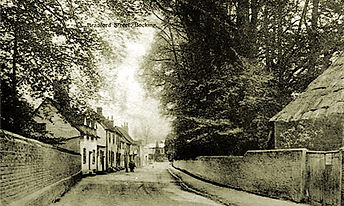




No. 185 Mill House and Bradford Mill
The present mill building, in its earliest form, dates from about 1720 when it was a fulling mill, used for both cleaning and felting of newly woven woollen cloth. But before then, on or near the site of the present structure, was an earlier mill built by the prior of Canterbury Cathedral, Henry de Eastry, in 1303. In 1304 Flemish weavers are said to have arrived in Bocking having travelled from Bruges via Harwich. It is generally assumed that this settlement was connected to the construction of the new fulling mill. At this time Flanders and France were at war with one another and the English, while having no quarrel with the Flemish, had a treaty with the French, so in theory the English should have been expelling Flemish merchants rather than inviting them in. However, it seems reasonable to assume that if Henry de Eastry could find ways to avoid compliance with the Statutes of Mortmain then he could probably equally find a way around the demands of a foreign treaty for which there was little enthusiasm in England.
It could be that the building of the original mill and the arrival of the Flemish weavers was the catalyst for the growth of the woollen cloth trade in Bocking that lasted for over 500 years.
In July 1540 King Henry VIII granted the Manor of Bocking, with appurtenances (formerly of the monastery of Christ Church Canterbury, i.e. the fulling mill) to Roger Wentworth. 1638 Francis Hawkin pays a rent charge of 4s 6d 3 fathings on the fulling mill. In 1688 the mill was owned by Albert Clarke who sold it to Mr Daniell, clothier. Later the mill came into the hands of the Nottidge
family around the time the current building was erected. In 1768 Josias Nottidge devised it in his will to his sons Josias and Thomas who, in 1772, commissioned an engineer to revise the water wheel and gearing. In an insurance document from 1789 Josias Nottidge Jnr., baymaker, was insuring the Mill House Bocking including a bayhouse and granary, which suggests that the mill was not only a fulling mill but also a corn mill. Around 1834 the mill building was occupied by Patrick Green, a miller, and was enlarged at the southern end to repurpose it for milling. In the 1838 Land Tax Record the property is still owned by the Nottidges and the will of George Nottidge the Younger in 1856 directs that the property is to be sold. It was possible bought by Patrick Green. The Greens were millers there from 1833 until Robert Rutland Green sold the property in 1888 to William Stephen Cane who installed steam power to supplement the water power. Later John Wagstaff Cane installed electric power and Jack Cane changed production from flour to animal feed and continued operations until about 1988.
The mill was then converted into a private residence in 1999.
A memory shared by Frederick Miles, on Jun 6th, 2011.
The present mill building, in its earliest form, dates from about 1580 when it was a fulling mill, used for both cleaning and felting of newly woven woollen cloth. But before then, on or near the site of the present structure, was an earlier mill built by the prior of Canterbury Cathedral, Henry de Eastry, in 1303. In 1304 Flemish weavers are said to have arrived in Bocking having travelled from Bruges via Harwich. It is generally assumed that this settlement was connected to the construction of the new fulling mill. At this time Flanders and France were at war with one another and the English, while having no quarrel with the Flemish, had a treaty with the French, so in theory the English should have been expelling Flemish merchants rather than inviting them in. However, it seems reasonable to assume that if Henry de Eastry could find ways to avoid compliance with the Statutes of Mortmain then he could probably equally find a way around the demands of a foreign treaty for which there was little enthusiasm in England.
It could be that the building of this mill and the arrival of the Flemish weavers was the catalyst for the growth of the woollen cloth trade in Bocking that would last for over 500 years.
In July 1540 King Henry VIII granted the Manor of Bocking, with appurtenances (formerly of the monastery of Christ Church Canterbury, i.e. the fulling mill) to Roger Wentworth. 1638 Francis Hawkin pays a rent charge of 4s 6d 3 fathings on the fulling mill. In 1688 the mill was owned by Albert Clarke who sold it to Mr Daniell, clothier. Later the mill came into the hands of the Nottidge family and in 1768 Josias Nottidge devised it in his will to his sons Josias and Thomas. In an insurance document from 1789 Josias Nottidge Jnr., baymaker, was insuring the Mill House Bocking including a bayhouse and granary, which suggests that the mill was not only a fulling mill but also a corn mill. In the 1838 Land Tax Record the property is still owned by the Nottidges and the will of George Nottidge the Younger in 1856 directs that the property is to be sold. It was possible bought by Patrick Green. The Greens were millers there from the 1841 census until Robert Rutland Green sold the property in 1888 to William Stephen Cane who installed steam power to supplement the water power. The Cane family changed production from flour to animal feed and continued operations until about 1988.
The mill was then converted into a private residence.





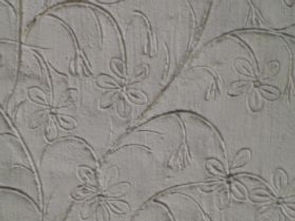

Bocking, Bradford Street Bridge
The present bridge was not the first bridge across the river. In 1869 when the previous wood bridge needed repairing the point was raised that the parish council in a court case in1829 were found liable for the repair of the bridge. In 1837 the bridge was widened about four feet. This earlier bridge was not the first. During construction of the bridge in 1927 evidence was found of earlier constructions. A series of wooden piles were discovered beneath the former level of the river bed whilst the largest obstacle discovered was a huge baulk of oak, 25 feet long and 16 inches across which was found 8 feet below the river bed, and which, when hauled out, weighed 1 ½ tons. Timbers of this size were common in constructions in Bocking before the 16th century so we may suppose that this timber provided a stable foundation for an early bridge.
The Bocking, or Bradford Street Bridge, was built in 1927 of reinforced concrete and the lamps on the bridge feature the Bocking Dolphin. The origin of the use of the dolphin is somewhat obscure. The first coat of arms granted to a Bocking resident was that of Alban Frere in 1352 and his shield carried three dolphins, but not in the manner of the dolphins used for the lamps. In 1592 the Bocking Deanery was granted an official seal, consisting of a red cross on a silver ground, and four dolphins. In 1926 when the Bocking Parish council wished to adorn the Parish Hall with a shield they consulted Alfred Hills the local historian. Mr Hills informed them that although the parish had no official badge or bearing that had been formally adopted by Bocking the Dolphin, as an armorial bearing with its tail up, had been in use there for nearly 60 years and it might very well be used on the Parish Hall; hence the origin of the dolphins used on the bridge.
The bridge carries two heraldic devices the Essex shield and the Bocking coat of arms granted in 1927.
The County Council Highways paid for the bridge and the shield emblems but the dolphin lamps which cost £100 were paid for by private contributions, the principal contributors being Mr. and Mrs. W. J. Courtauld.
In the drought of the summer of 2022 the river level was low enough that the springs could be seen rippling the surface of the water.











Fulling Mill House (Convent)
Over the river in Broad Road is the Bethel Centre, until 2022 The Franciscan Convent and Church of the Immaculate Conception, an irregular group of red brick buildings; the house (timber-framed and plastered) dates from about 1830 when it was rebuilt and the church was designed by J. F. Bentley (Westminster Cathedral) in 1898. The Convent included an Orphanage and a School, before being a residential home for the elderly.
The house was formerly known as Fulling Mill House in which lived five generations of the Nottidge family, who bought the property in 1740. The house is described in Wright's "History of Essex" 1832, as “lately rebuilt in the elegant style of modern architecture. The charming Regency drawing room and beautiful grounds are relics of those spacious days.” In 1844 the house was acquired by the Courtauld family who changed the name to Bridge House and gifted it to the Sisters about 1905. There is an older building at the rear, which within living memory had special ventilators 'to take the dust from the looms working within'.
Cardinal Vaughan opened the Franciscan Convent on 2 October 1897.
Franciscan Convent, the new Church was opened on the 25th May 1899 by the Right Reverend Bishop Brindle with High Mass at 11.30am.
Franciscan Convent School
A Memory of Bocking
I remember being a pupil from the age of 5 (1930) to the age of 13 at the school run by the Franciscan sisters at this Convent. The original house and grounds were given to the Sisters by a member of the Courtauld family, Madame Edith Arendrup (Edith married a Dane, hence the surname). There were about 80 or 90 pupils. As this was the only Catholic school in the area, children cycled from neighbouring villages to attend. Mother Mary Michael was a great force in the school.
I can also remember that there was a large metal ring let into the wall. I think one member of the Courtauld family used to paint animal pictures and used the ring to tether the animals! I should be delighted to hear from anyone who remembers this Convent when it was run as a school. I can remember the names of Ernest Testi (with whom I used to fight regularly!), Billy Pask, 'Pie Face' (God forgive us!), Molly McGrane who came from the Orphanage (also run by the Sisters). I left the school in 1939 and went to study for the priesthood at St Edmund's College in Ware, Herts - that was three weeks after the outbreak of the War.
A memory shared by Frederick Miles, on Jun 6th, 2011.





No 114 "The Tudor House"
Built in about 1520 for a Bocking clothier the Tudor House is richly endowed with oak timbers. There is a gatehouse at the south end and a characteristic carved bressumer supports the jettied first floor. It was fitted with glazed windows on the ground floor when built, but due to the expense of these the first floor windows were unglazed and closed with shutters which ran in slides, traces of some of which are still visible. Traces of service doors exist in a partition inside as does some of the original wattle and daub. The house was restored in 1974 and was used by the Civic Society to house the Braintree Museum Collection begun by the late Mr. Alfred Hills; the old museum sign is still visible. For most of the 19th century three generations of blacksmiths lived here.
The house, six tenements in 1916, was built in the first half of the 16th century, supposedly for a clothier, on an L-shaped plan with the wings extending towards the south and east; a little later in the same century, the south wing was extended to twice its former length, and now has a cart entrance at the south end. On the west front the upper storey projects, and has curved brackets and a moulded and carved bressumer, with carving slightly different from that on the later extension. The first storey plates are laid on top of the bressumers, an unusual procedure. The first floors are framed into binding-joists with common-joists at hollow return and cyma profile, fitted by means of tenons with diminished haunches. A 2 bay hall exists on the first floor of the south range. In the east wing, on the south side, the upper storey has exposed timber-framing; it formerly projected, but is covered by a narrow modern addition; in the north wall is an original window of five lights with moulded mullions and lead glazing. Inside the building are two 17th century panelled doors, one with cock's-head hinges. The roof of the south wing has cambered tie-beams; one of them rests on shaped and chamfered wall-posts and has a curved brace. In the east wing, on the ground floor, the two west rooms have original moulded ceiling-beams and, on the first floor, two rooms have early 17th century panelling on the walls. The roofs were crown posted with collar-purlins originally throughout both ranges, but 2 bays of the north range were replaced by a side purlin structure at some early date for reasons unknown. A most probable date for these buildings must in the present state of knowledge be between 1520 and 1530.
The east wing is now demolished.
The old museum sign is still visible (2020). The timber framing of the first floor was previously covered with a plaster render until about 1920 when the framing was exposed and, despite first appearances, the ornate oriel window was added. In 1940 the bay window on the museum fell off when the navy blew up a mine which was dropped by the Germans.
As revealed by the census returns the blacksmiths lived and had their workshop at the back. Blacksmiths were still listed in the 1917 Kelly’s Directory.
The blacksmiths’ yard eventually became a garage & motor repair shop. The Tudor House fell into a state is disrepair and there may have been plans for its demolition before it was saved by the Civic Society and restored in 1974 and was used by the Civic Society to house the Braintree Museum Collection begun by the late Mr. Alfred Hills. During the restoration a half basement was revealed with water pipes leading in and out. This could have been a wool washing vat.
In the 1838 Tithe List (Land tax redemption) the property was owned by Oliver Gosling, the owner of the Bocking Brewery. In 1855 the trustees of Oliver Gosling put up the properties, in the trust, for sale.


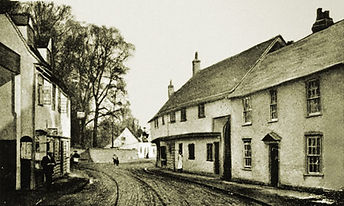



No. 110
This house is notable because it was built between 1680 and 1690, whereas most other 17th century work in the street is in the form of modification or alteration. This is a very nice example of the 4 room design which occurs in so many houses both large and small from this era. 19th century alterations were responsible for the attractive front windows. This house is built against and makes use of the wall to the adjoining carriage arch. In 1803 it was owned by the local brewers, the Gosling family, who held it for at least three generations.

Nos. 108 & 108A
There is some uncertainty about the age of 108. It has been suggested that its origins are a late 16th century 3 bay house, probably with a front jetty, and extensively altered in the late 18th century. 108a forms a north wing and is probably older than 108. The building was owned by the Gosling family, the local brewers from before 1803 and remained in the family until the early 20th century. 108a was used a Wesleyan chapel in the mid-19th century.
108. Possibly a large late 16th century timber-framed and plastered house extensively altered in the 18th century. The centre window on the 1st storey has a semi-circular arched head. A central 6-panel door with a semi-circular fanlight with radial, glazing bars has a wood doorcase with panelled reveals, attached columns and an open pediment. The door is approached by stone steps. Much of the original frame remains, with jowelled storey posts and arch braces, and a moulded bridging joist. Early 18th century detailing includes some dado panelling. Fine late-18th century stair with stick balusters and wreathed handrail. The roof is tiled, hipped and steeply pitched.
108A. A 2-storey wing at the north east end, has 1 window range on the street front and 2 window range on the north east side,3-light windows, double-hung sashes with glazing bars, in flush cased frames. Roof tiled. It was listed as a place of worship in the 1855 PO Directory and probably ceased to be a Wesleyan chapel after the death of John Gosling in 1866.

 v
v

Nos. 104A & 106
106 was a large late 16th century timber framed three bay house. The first floor was originally jettied but later underbuilt. The building was refronted in the 18th or early 19th century with sham timber framing. Early 18th century detailing includes some dado panelling, also inside there is a fine late 18th century stair with stick balusters, and wreathed handrail. In the 1800's this was one of the Breweries of Bradford Street owned by Goslings. Note the vents in the wall. At one time approximately 1890, there was an oast house at the rear of this property. 104a was until 2017 Benson’s Bar; it was built late in the 16th or early in the 17th century, on an L-shaped plan with the wings extending towards the N.E. and S.E. Inside the building, on the ground floor, is a ceiling beam supported by a large curved bracket, and the original roof construction includes tie-beams with plain curved brackets. The properties were owned by Goslings the brewers who sold their business to Greene, King & Sons in 1904 who continued to use the premises well into the 20th century.
The properties were already owned by the Gosling family in the 1803 Nockold Survey. This was the site of the Bocking Brewery. The Brewery was bought by Greene King & Sons Ltd in 1904 and they continued to operate the brewery until 1925. After that Peatling and Cawdron’s off-licence business became agents to Greene King & Sons Ltd, later joining forces with Greene King & Sons Ltd. They ceased trading here before 2002. Hogs occupied 104a first as a restaurant and then as a wine bar in about 2005. It was renamed Benson’s Bar and operated as such between 2009 and 2017.
On the south side of 104a is a narrow alley way known as Cock Lane after an early inn, The Cock. It is possible that 104a was the site of this early inn.
Cock lane runs between Nos.104 and 104a. The will of John Hartewell 1515 leaves his burgage in Bocking called the Cok to one of his sons. (A burgage was a strip of land extending away from a highway, typically with a house situated on the highway. On the basis of this definition either no. 104a or no. 104 was the Cock.) There are two deeds which refer to the Cock Inn, one from 1639 and one from 1707 stating that it was on the highway and south of a property called Dashes. A Session Roll (ERO Q/SR 391/5B) dated 3 Jan 1662 states “"Dashes tenement" . . . in the occupation of Edward Tabor . . . lying between the inn called the Cock, now of Henry Browne clerk, in the occupation of John Chalke on the north. . . .” The Cock probably operated until 1786 or 7 for in 1788 another inn appears – The Spread Eagle (before the name was used for an establishment in Church Lane); the 1793 census has an inn by the name of the Spread Eagle, occupied by William Martin, in this section of the street, but it had closed before the Nockold survey of 1803. Was this Spread Eagle the former Cock inn? The Spread Eagle of the 1793 Census places it between the Tudor House (118-114) and the former Benson’s Bar (104a, 106) if the census entries are in order. However, it may have previously been The Cock.

Nos. 102 & 104
This is a timber framed and plastered house, possibly dating from the early to mid-15th century and extensively altered in the mid-16th and early 19th centuries. The ground storey has a small 19th century shop window from when it was a grocer’s. The narrow passage between Nos. 104 and 104a is known as Cock Lane and a map of 1875 labels the cottages (then 3) behind 104 as Cock Yard implying that 102/104 was the Cock Inn.
The heavy joisting in this building is typical of 15th century construction, when timbers up to 30cm x 30cm were used, rather than the ‘lighter’ timbers of the 16th century (up to 20 x 20cm) which reduced further to 10cm x 10cm or even less by the late 18th century.
On the north side of 104 is a narrow alley way known as Cock Lane after an early inn, The Cock. The will of John Hartewell 1515 leaves his burgage in Bocking called the Cok to one of his sons. A burgage was a strip of land extending away from a highway, typically with a house situated on the highway. On the basis of this definition either no. 104a or no. 104 was the Cock. It is possible that 104a was the site of this early inn. However, this building is older than no. 104a, which is of late 16th or early 17th century construction, and is therefore old enough to be the Cock in of extant documents.
The inn probably operated until 1786 or 7 when it disappears from the licencing records and another inn, The Spread Eagle, appears in 1788. This is listed in the 1793 census. The location of the Spread Eagle is in this section of Bradford Street but the precise location is uncertain since the order of entries is not to be relied on.
Extant deeds begin in 1803. In 1838 the building is acquired by John Gosling of the Bocking Brewery (at 104a), one of the beneficiaries of his will, Ellen Gosling, buys the shares of her siblings in this building as part of an ownership rationalisation exercise. In 1875 it was still held in trust on her behalf.
The shop at 102 was already a grocer’s shop in 1838 when more detailed records began and was still a grocer’s in the England Register of 1939. If you, dear reader, know when it ceased to be a grocer’s shop please send FOBS a message via the Contact Page.
In the 1870s the widow Sarah Boosey lived in one of the two cottages, supported by her daughter who was running the girl’s boarding school in Wentworth House across the street.
By the time of the 1881 census one of the street’s long term residents was living at 102; Benjamin Eve grocer and house painter. Mr Eve died at the age of 92 in June 1926 then being one of Bocking’s oldest residents.



No. 98 & 100
A timber-framed and plastered building probably 17th century with 18th and 19th century alterations. The frame suggests it could be part of a much earlier medieval hall house. The arched doorways at ground level were cut from a piece of wood that included both trunk and branch indicating a 14th century date. The gambrel roof in the front bedroom appears to have replaced the original roof in the 18th century. The ground storey had an early 19th century shop window, replaced in 1976, the premises being a bakers from about 1840 for over 100 years.
By 1841 Thomas Lewis had established a bakery here, the business passed to the Everards between 1874 and 1881. The Everards sold the premises and business to the Boileys in 1944 who immediately sold the business and premises to Percival C Legg in two separate transactions. In 1970 the premises were sold to Roger A. Cassaignon who, in 1972 obtained planning permission for alterations to the front elevation and then in 1976 planning permission for a change of use from shop to dwelling house.


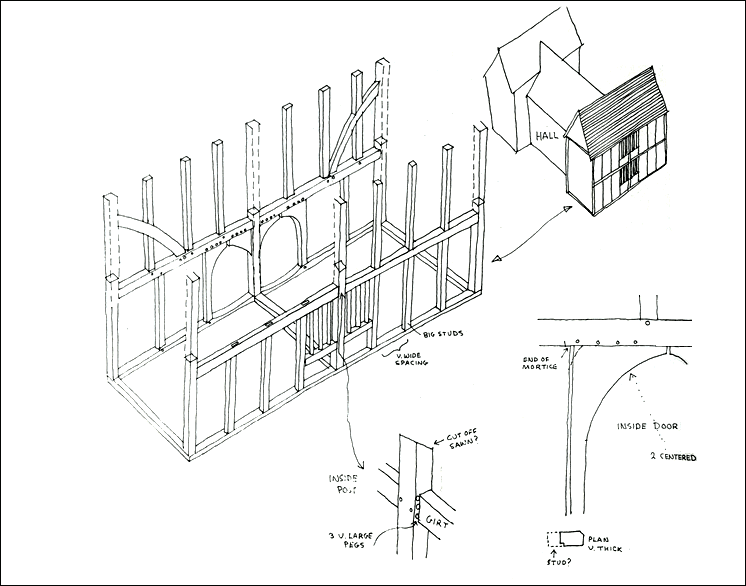


No. 94 Wych Cottage
This is a typical 3 bay 2 storey mid-16th century timber framed house with many construction details of the period. It is worthy of note as the frame is more than 75% complete, which is unusual as records show that so many were later extensively altered. The windows showing on the front are modern (circa 1920) and are set in between the main bay frames. The roof is arch-braced to side purlin. Tinker, tailor, soldier, sailor . . . not quite, former tenants have included weaver, wool comber, hairdresser, tailor, butcher, shoemaker, carpenter, crape finisher and brewery worker.
A mid C16 house formed from two cottages about 1935 (94 and 96 – so which cottage?). A timber-framed and rendered house dating from the mid-16th century, with 19th century and 20th century additions. It has a plain tile roof and is a two storey, three bay timber framed house with later extensions to rear. The façade was remodelled in the 20th century. It has a central front door with classical arch surround, which is flanked by leaded light windows from about 1920. At ground floor level the windows have six lights each, at first floor level there are five lights to left hand side, two light and three light windows to right hand side. The rear elevation has two gables with long 20the century leaded light windows and central door. The interior; on the ground floor the rooms have original exposed spine beams and floor joists, all with run-out chamfer stops. The south wall has exposed pegged 16th century studs. The first floor has an open truss, with splayed head posts and mortices for arched braces, there are exposed 16th century studs with internal arched bracing, a 16th century window with shutter groove, infilled on rear wall and now internal. In the attic there is a 16the century clasped purlin roof with collars on principal rafters and cranked wind braces, face halved scarf joints with under squinted abutments and side pegs to purlins. There are remains of wattle and daub infill. There are 19th century roof trusses to the rear wing.



Nos. 92 & 92A
The house was first built in the 16th Century and probably jettied to the street. To the rear of the property further bays were later added at right angles to the road. These may have started life in the 16th Century with a single floor and then built upwards in the 17th Century. This is a plastered and timber-framed two-storey house. Two entrance doors indicate that before this use it had been divided into two cottages. It is characteristically Georgian in appearance, with a bay window and, more unusually, a projecting shop window with a flat canopy above. There are two main elements to the property, which is in effect T-shaped: a three-bay building parallel to the street, and to the rear of it a long three bay building at right-angles to the street. To the left of the property and through the gates, the butcher's grounds were used as an abattoir and stables. The ice house still remains here. Extant records indicate it was a butcher's shop from at least as far back as 1793 until 1997.
This T shaped building has developed since the street facing section, comprised of three bays, was first built in the middle or later half of the 16th Century. Soon after a stair tower was added to the rear of the southernmost bay. The section to the rear of the property also consists of three bays but is perpendicular to the street and joins the former at the rear of the stair tower. It is possible that the western bay nearest the street may be older than the adjoining bays and that originally these were all single storey and raised in the 17th or early 18th Centuries. Finally a stairway was added between the two, three bay, sections next to the 16th Century stair tower. The plasterwork here had some ornamentation and two date markings, 1712 and 1722 but these are no longer present. It is possible that the street facing bays were originally jettied to the street although the addition of sash windows in the Georgian period and other changes obscure the original arrangement. To the rear evidence of diamond mullioned windows remains at ground and first floor levels with a slot for a shutter visible at the rear of the southern bay. This and the mullioned window below would have been obscured by the addition of the stair tower which also has a mullioned window at first floor level. The northern bay has been cut through at the ground floor to form a cart entrance. No. 92B to the rear was originally a stables and cart lodge.
The original purpose of the property is unknown but was, until 1997, a butcher’s shop and appears to have been so since at least the time of the 1793 census when it was in the possession of William Medcalf. Records show that previously the property had been owned by an Isaac Polley, also a butcher. Despite this long history as a butcher’s shop times were not always easy as can be seen from the story of William’s son John. Following the deaths of William and his Wife Lucy the property passed to son John and daughter Charlotte in 1827. At that time they needed to borrow £300 to pay off outstanding loans. A year later Charlotte sold her share to John for £150. In 1833 a slaughterhouse was built (now part of No. 98) perhaps using the £100 borrowed in October of that year from the Reverend Charles Barton. By 1848 however John was in financial trouble and was imprisoned in Springfield Gaol as an insolvent debtor. The property was put up for auction at the Woolpack Inn but failed to make its reserve, as a result Eli Tyler was appointed as an administrator and arranged for James Perry to purchase the property for the sum of £400 which was not quite the £447-14s that the executors of the Rev. Barton’s estate, John Holmes and George Nottidge, said was owed to them but was the best price that could be achieved.
James Perry continued to run the butchers shop until some time after the 1891 census. Kelly’s directory of 1894 lists Ernest Warmoll as the then butcher. By the 1914 edition of the directory William Benham was the butcher and appeared in the directories as late as 1926.
Frederica Augusta Boat, the wife of Horace Alfred Boat, Butcher, purchased 92, 94 & 96 on 15th June 1931. The Boats were the owners of 92 when it was listed on 25th October 1951.
Frederica Boat died 4th January 1970. Her daughters were: -
Margaret Frances Smith
Mary Etheldreda Hay
The girls were away at school during the conversion of 94 and 96 into Wych Cottage circa 1935 so probably born circa 1925.
Mary Hay worked at the Braintree Telephone Exchange and was in the ATS (presumably during WW2). Mary Boat married John B. Hay in the second quarter of 1947 at Braintree. She moved to Birmingham after her marriage.
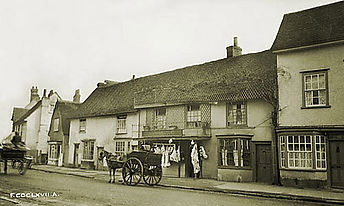


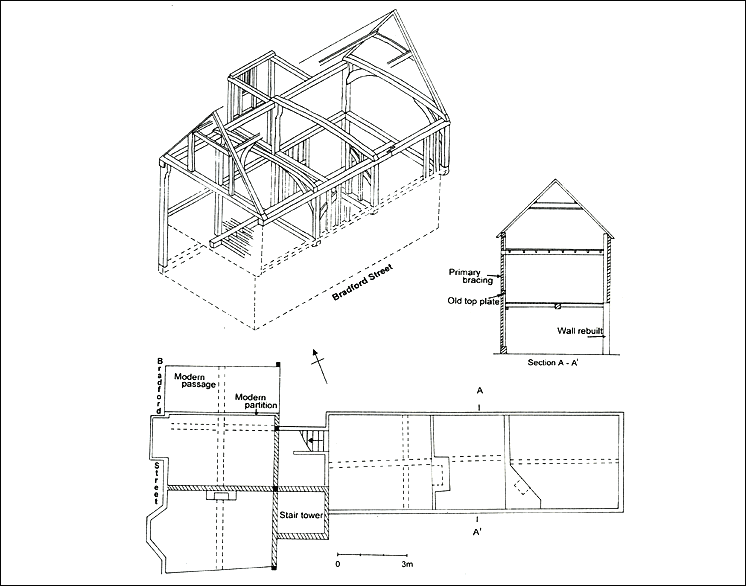


Nos. 84 & 90
This is a late C16 range of timber framed and plastered houses in four tenements with C17 additions and altered in the 18th century and 19th century when the front was heightened. The south end gable has some exposed timber-framing. The building is of two storeys and attics. It has a five window range overall, double hung sashes with glazing bars, in flush cased frames. Nos 84 and 86 have three window range, the 1st storey windows have thick section glazing bars. The ground storey has an oriel bay window and paired doorway with plain fanlight and cornices on cut brackets. The doorways to Nos 88 and 90 are similar but separate. No 90 has a 3-light bay window on the ground storey. Three 2-storeyed gabled wings extend east at the rear. Roofs tiled. The interiors have exposed beams, No 86 has a carved beam with foliated stops and No 88 and 90 have moulded beams.
The properties were tenanted at least until the mid-20th century, with ever changing tenants making the census records difficult to associate tenants with properties.
The four properties were offered for sale together in 1949 when nos. 88 and 90 were let on weekly tenancies at a total rental of £78 pa; nos. 84 and 86 commanding a total inclusive rental of £40 19s pa. No. 84 was offered with vacant possession.



Nos. 70 - 76
The mid-20th century semi-detached houses standing here replaced cottages and the tenements which had once been the "Swan Inn", an 18th century hostelry, demolished in the 1939 slum clearance. The inn had a gatehouse to the rear and was joined to 78, the end timbers of which can still be seen exposed on the end wall. The whole site in old documents covers The Swan, Swan Yard, Prospect Place and Bowtle’s Yard.





Nos. 68 & 68A
The ceiling joists are a plain indication of its original date - about 1450. Late 18th century documents identify this building as the “Rose and Crown” whilst the inn is mentioned as early as 1671. The Mansard roof was rebuilt in the 18th century. In 1803 it was owned by the Gosling family, the local brewers. Between 1807 and 1834 it was home to a schoolmaster and then a shoemaker before it became the "Bocking Academy" a boys boarding school. By 1871 it was a livery stable and had a general shop. Around the time of the First World War it housed a sweetshop and a chemist. The sweetshop eventually became the post office until this closed in the late 20th century with only a post box remaining outside.
A house, with two former shops, is of two storeys with attics having its origins in the 15th century as evidenced by the ceiling joists in the former sweet shop. It was extensively altered in the second half of the 16th century, on an L-shaped plan with the wings extending towards the north and east. At the back there are modern additions, and the mansard roof was rebuilt in the 18th century. Inside the building, a room at the north end has two original moulded beams. It is of two storeys and attics with a three window range of double hung sashes with glazing bars in flush cased frames. The centre window on the 1st storey is 2-light and on the ground storey is 3-light. The ground storey has 2 small 20th century shopfronts. No 68 has a doorway with a moulded wood architrave, pulvinated frieze and a cornice. The roofs are tiled, mansard, half hipped, with two gabled dormers with casements.
The inn is documented as early as 1671 and ceased trading about 1805. In 1732 it was sold to Barnabas Allen who, in 1735, sold it to Robert Manning. Samuel Crakanthorpe sold it to John Marriott in 1793 and it was sold to Oliver Gosling in 1795 when Crakanthorp was bankrupt. Oliver Gosling still held the property in the 1803 Nockold survey but it ceased trading in 1804.
In 1807 William Hagon, schoolmaster is listed here, presumably his son Joseph, a shoe maker, sold the property to George Saltmarsh in 1834 who opened a boarding school. He sold the business (and property) to George Lovell about 1850, in the 1861 Cornelius Newcombe is listed as the schoolmaster. By the time of the 1876 census it was a livery stable being run by the Oliver family who were still there in the Kelly’s directory of 1902.



Nos. 54, 56 & 56A
The main block of these was built in the early 16th century but the roof was rebuilt in the 17th century and the building refronted in the 18th century. There is a long rear wing along Phillips Chase, with a gatehouse at the farther end. The first floor is open throughout this wing indicating some form of commercial use. 56a has a 20th century shop front. The Phillips family of butchers owned the property and ran their business here from the late 18th century and into the 20th century giving their name to Phillips Chase, the lane that runs alongside the building.
Nos. 54, 56 & 56A. A 16th century, timber framed and plastered building, with a 18th century facade, parapet and cornice, of two storeys. There is a small shop front at north end, which fronts the remains of a late 15th century or early 16th century crosswing, now oversailed. There is a central wood doorcase, with a six panelled door, panelled reveals, pilasters and dentilled pediment. The main structure is of about 1500, originally jettied with a chimney inserted in about 1570. The original roof was rebuilt in the 17th century. A long rear wing to the east adjacent to Phillips Chase, which takes its name from the Phillips family, is of 16th century date, with a long wall jetty on south side and a cartway at the east end of the range. Internally much of the frame remains and there is good early 18th century and 19th century detailing. A late 16th century fireplace has fine carved mantel beam. The east wing appears originally to have been open above first floor, without partitioning, presumably for commercial use.
In 1790 Phillip Phillips is listed as a cardmaker in the Colchester poll record, the requirement to be able to vote was that one had to own a freehold.
In the 1793 census he appears as a butcher so, like many others, with the terminal decline of the cloth trade he found a new profession. The Phillips continued to own and live here, the last available record is of Frank Phillips being listed here in the 1939 England and Wales register; a kind of census taken when war threatened.
In the 1838 Tither redemption record George Phillips is shown as the owner of no. 54 with Crispin Currey as the tenant. In White’s Directory of 1848 Mr Curry is listed as a shop keeper and in the 1851 census he is given as a grocer. In later census there are a variety of tenants and trades probably associated with no. 54.
At some point Mr C Richardson was running a butchers shop at no. 56.







Nos. 50 & 52
No. 52
17th century timber famed house refronted in the 18th century, although given the history of many properties in the street its origins could be much earlier. It is first identified as the King’s Head inn with brewery behind in the will of Samuel Tabor in 1784 when it was bequeathed to his son-in-law Timothy Boosey whose will in 1804 directed it be sold. The Gosling family tenanted the inn at this time. By 1815 it was leased to the publican John Joyce who later owned the building and ran the inn until 1888 when it was sold to Frederick Rankin. In 1902 it was bought by the Gosling family and in 1904 passed to Greene King when they bought out the Gosling brewery and inns. In finally ceased to be a public house about 2014.
No. 50
Little is known about the origins of this grade 2 listed house. It has a late 18th century brick front and cart entrance on the north end. John Joyce who owned No. 52 also owned this house at the time of tithe redemption in 1838 and he leased it to Dr Manthorpe, a surgeon, who committed suicide.
Recent research has found that in 1709 the will of Richard Arnall, the King’s Head occupied by his son-in-law John Porter, goes to John and afterwards to his grandson Richard Arnall and then to the eldest son of Richard.
After the premises ceased to be a public house in 2014, and before some building work on the land behind, an archaeological dig (2017) discovered a Roman cremation urn whilst digging a soakaway pit. This discovery is the first direct evidence for Roman occupation in Bradford Street. The urn contained the remains of a large robust adult male aged over 45 years old and possibly dates to the 3rd century.
A late 18th century facade to a building originally dating from the 16th century. Some 16th century brickwork remains in the cellars, and 16th century timber has been re-used. It is of two storeys with cellars. It has double hung sashes and a central six panel door with semi-circular fanlight. There was a major rebuild in circa 1710, when it became a two bay plan with central entrance hall, two south chimney stacks and a parapet. Further extensive alterations took place in about 1780, when a cartway was formed. A number of doors and an attractive staircase remain from this period.
In 1784 Francis Mortier is listed as having voted in the Colchester Poll, the requirement being that he owned a freehold property. In the 1798 land tax list he paid 8/- (40p) on this property.
John Joyce owned the property together with the King’s Head next door in the 1838 tithe record. In 1839 he leased the house to Dr William Manthorp for seven years.
From the CD of A Walk With Henry (the recollections of Henry Harrison who grew up in Bradford street in the 1850s and wrote the script in 1946):
“For some unknown reason he Dr Manthorp) committed suicide and left his widow Mrs. Manthorp and a large family. She continued to live in the same house and with help of one or two lodgers, was partly an invalid and kept a Donkey Carriage and a page boy in buttons walked by the donkey’s head. The family consisted of 3 boys and 2 girls Fanny and Ella. The latter married later a Mr. Chubb of Chubbs Safe & Lock Coy. William was in Sparrows Bank, and later manager in Coggeshall Branch. Horace and Edward were at Blewcoat School, London and came home for holidays dressed in Blue coats and yellow stockings. Part of Manthorpʼs house was over the Kings Head gateway and the house belonged to Thom. Joyce alias Upright Joyce.”
John Joyce and his widow lived here until about 1892.




No. 48
The 18th century facade hides a formerly jettied timber framed building dated to about 1500 on the evidence of tree-ring dating. The Georgian front and Mansard roof are thought to have been added in 1787 as were the addition of two chimny breasts and the internal rearrangement of rooms. This date comes from carpenters marks, with the date, on two or the roof timbers. The living room has an ornately carved beam with moulded joists. 19th century renovations and 20th century extensions to the rear are documented. By 1970 the property was derelict and rescued by Essex County Council. In the late 18th century the house was owned by John Lorkin, the innholder of the Woolpack Inn. By 1838 it was owned by Dr Harrison, surgeon and GP, and occupied by Mrs Sophia Courtauld.
The house would appear, from evidence of the built fabric, to have been constructed in the mid-16th century, although it has been dated a century earlier. Elements of the oak timber frame are visible, particularly the first floor joists and beams on the ground floor. Carpenter’s marks suggest that the floor structure is in its original location. A later staircase has been cut through at the rear of the house. The front elevation was originally jettied and the present Georgian elevation was probably created in 1787. At this stage an additional mansard floor was added and the roof reconstructed; the interior was also divided into rooms and plastered; the two chimney stacks were probably constructed at this stage to serve the new internal layout. Two of the roof timbers are signed and dated by the carpenters. All the Georgian fire surrounds have been lost, but door and window architraves survive from the late 18th. A photograph dated 1902 in the Frith collection shows scaffolding to the front of the house, suggesting at least one programme of repairs and alterations during the 19th and 20th Centuries. The present rendered finish to the front elevation dates from c. 1995 when the conservation officer was consulted. A postcard dating from c. 1890 suggests that the facade originally had shutters to the ground floor and a blind window centrally to the first floor.
The house was derelict in the 1970’s and purchased by Essex County Council as part of their Revolving Fund to save historic buildings from loss. It is illustrated in a booklet published in 1991 by the County Council. In 1977 the roof was retiled, the exterior repaired and the interior adapted to use as a family house, then sold it on the open market. At that stage a large two-storied extension at the rear of the house, abutting and over lapping the rear of no.50, was removed and the rear elevation reconstructed. The first floor sash window and the dormer window above were renewed at this date. The rear door and bathroom window appear to be 19th century. The rendered rear elevation is partly lime plaster on lath (south end) and partly cement render on EML where the extension was removed. Drawings prepared by the County Architect showing the works undertaken in 1977- 8 have been consulted.
Since this date a second dormer has been inserted on the second floor in 1998 and a kitchen extension constructed within the light well formed by the adjoining house to the south (no.46 Bradford St). A drawing dated 1981 shows the construction of this extension with a slated monopitch roof to this extension and Velux roof light. A lean-to conservatory has since been constructed along the remainder of the elevation, leaving a narrow space between the kitchen and the southern end. It consists of a patent glazed roof with cast wired glass, supported on reused oak beams and posts. It originally formed an open veranda but the sides have since been enclosed with painted timber, fully- glazed doors.
A tree-ring dating study in 2017 placed a build date between 1490 and 1520 on the original structure.
According to the museum video “A Walk with Henry”, no. 48 was owned (actually occupied) by a doctor who had a paddock behind where Cardinals works is now. The garden boundaries were all changed when the ECC owned it in 1970's. The water supply for the cottages in Phillips Chase runs through the garden.
2013. John Woodcock RIBA AABC.
Phillips Chase
The Nockold survey map shows a building in the garden by the side of the Chase, presumably the stables, these buildings still being there on the 1897 OS map. In the 1861 census there are no entries which can be attributed to cottages in the Chase. In the 1871 Census there are buildings listed for the Chase, one occupied by a family, one used as a mat & hemp factory, 2 used as slaughter house and stables, one unoccupied. In the 1881 census there are 3 families listed for the Chase. The 1891 census, although not naming the yards, etc., appears to have 3 families who may be in the Chase. The 1901 Census has 8 households between No. 68/A and Phillip’s butchers so probably none attributable to the Chase. Nos. 3 – 13 Phillips Chase appear to be early 20th century. The buildings on the 1924 edition of the OS map have a different outline to the earlier editions.
In the Nockold Survey of 1803 the property was owned by Mrs Lorkin, whose husband John had died earlier in the year and following her death (1825) to be sold.
In the 1838 tithe record the property was owned by John Holmes and occupied by Mrs Sophia Courtauld who last appears in the record with an entry in White’s Directory of 1848. John Holmes, surgeon, is then living there until some time around the death of John Holmes.
Extant deeds run from the 1867 will of John Holmes leaving the property to his daughter Elizabeth Amy Holmes, son Edward Holmes and granddaughter Emily Emma Veley (then 16 years old).



No. 46 "Cardinals House"
This building was rebuilt by the Gosling family after its publicised sale in 1855. It had been since before the mid 16th century the "Cardinal's Hat" public house, so called after Cardinal Wolsey who, when being made a Regent in Rome, sent a coach to England to collect a hat which he had left behind, an incident recorded in many pubs with the same name. Following the rebuilding it was a tenanted house. In the early 20th century it a hardware store and later a garage and filling station before being renovated in the second half of the 20th century.
For details of the Cardinals Cap, or Cardinals Hat, see the entry under Inns.
In 1855 the old Inn was put up for sale: -
To be sold by auction on Thursday, May 31, 1855, at three o’clock in the afternoon at the Black Lion Inn, Braintree, by order of the proprietors (trustees of the late Oliver Gosling).
It is possible that this lot failed to sell since John Gosling appears to have pulled down the old inn and erected the present building.
The current building was first offered for sale in 1878.
A building contractor lived there for the next 20 years.
By 1911 Oliver Edward Durham, hardwareman and hawker lived there and possibly ran a shop on the premises.
By the 1950s a motor engineer (Benjamin Tofts) had a garage here, sold to RJ Hall in 1952 and then sold to JW Overfield in 1964 who began selling petrol (from Shell Mex and BP).
In 1975 the ECC acquired the property and after some renovation work and exchanging some of the land with no. 48 sold the property on as a dwelling house.





No. 44
This is an 18th century gault brick building, altered again in the 19th century, it is an imposing structure comparable to but not of such good quality as No. 4. The interior has a panelled room on the ground storey and a linenfold oak panel dado. There is a good original door case at the rear, and the fact that the chimneys have been built with a considerable number of late 16th century bricks indicates the existence of an earlier building possibly on this site. For a short time in the 1870s a member of the Durell family (TV series) lived here. By the early 20th century the property had been divided into flats.
A late 18th century white gault brick house, possibly incorporating parts of an earlier house. The front has a parapet, slightly recessed, above each window range, with a stone coping and cornice. It has two storeys and attics. The front facade has a four window range, arranged three and one. The north end with the single window range, is slightly recessed at the front front (a later extension). Mainly double-hung sashes with glazing bars, in plain reveals. The outer windows on the 1st storey of the main block are three-light mullioned and transomed casements with glazing bars. The ground storey has two three-light bow windows with cornices and a central eight-panel door with the upper panels glazed. The doorcase has a plain architrave and a cornice on console brackets. The roof is tiled and hipped with three flat headed dormers. The interior had a panelled room on the ground storey and a linenfold oak panel dado, these may no longer exist (2020).
In 1790 the surgeon Dr. John Tweed, who lived here until his death in 1839, began to inoculate the poor of the parish, about 500 persons, at a cost of £5.
After 1839 until 1875 Mary Ralling and her sister Elizabeth, of independent means, lived here.
Alfred Durell and two sons from the Jersey family (think TV series) then lived here for, perhaps as long as 10 years.
The building appears to have been converted into apartments in the 1880s based on census returns. In 2020 there are seven appartments.


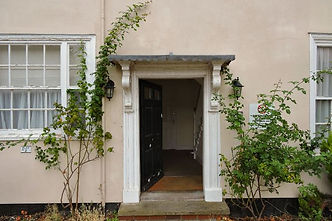

Originally a single house the impressive 18th century facade conceals a timber framed building from circa 1400, which as far as can be ascertained is a T shaped plan, the rear wing of which is contemporary. The quality of the mouldings to the ceiling joists in the older part are extremely high class, as also are the building joist and common joists forming the attic floor.
The roof has been rebuilt in the late 17th or early 18th century but there are several unusual features of the remaining timbers which would have supported a crown post and secondary collar. If this was so it is particularly rare as no known commercial or domestic houses exist in Essex, except possibly in churches. These are otherwise more common in Kent and Sussex. In any event it would have been very tall and impressive, and decorated with carved or moulded woodwork. Such ostentation in roof and joists is most unusual and almost certainly not intended for domestic purposes, we can only speculate the likely commercial purposes for such a building with its impressive front entrance and commercial hall above. It is comparable but 100 years earlier than the front range of 'Paycocke's in Coggeshall. Owned in the late 18th century by the Boosey family.
In 1798 the widow of Nathaniel Boosey (son of Timothy Boosey) is indicated as the owner in the land tax records. Nathaniel had died earlier in 1798.
Elizabeth had two children a daughter and son, John.
In 1801 Elizabeth married William Harrington a widower and carpenter. He became the owner of the property since Nathaniel had died intestate.
William Harrington and John Boosey operated a joiners and builders business. They were the ones who had purchased the Red Brick house (see no. 91 Queen’s Meadow) for the demolition materials.
William Harrington died in 1848 leaving the property to his son and then granddaughter, John being allowed to continue living there for a fair rent. John is still there in 1855 but no longer there in the 1861 census.
By 1874, another builder, Richard Bowtle, is listed there and by the time if the 1881 census the property appears to have been divided into the two dwellings of today. It is clear from the will of Richard Bowtel that he did not own the property so it may well still have been held on trust under Harrington’s will.

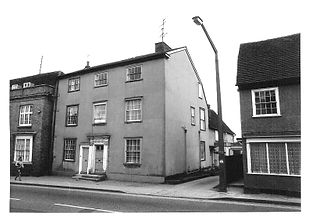

No. 36 "The Angel"
This was originally built in the 15th or 16th century as a 2 storey building parallel to the street. It had a gable on the north end and half-hip to the south. The present condition of the building which includes a small gabled 16th century staircase tower, with a 17th century staircase at the rear, makes it difficult to accurately date, or describe, but from what little is visible there could be considerable potential in the original framework. The Angel first appears in the 1871 census before which time it was owned and occupied by a shoemaker and leather cutter.




No 24
A late 18th early 19th century timber framed, plastered, house. It was owned in the mid-19th century by John Holmes on of the prominent solicitors in the town.
From 1912 to 1935 the house was the home of the Rev. David Coghlan (Catholic) and served as the Presbytery before the Catholic parish church, Our Lady Queen of Peace, was built. The Rev Coglan began the fund raising to build the Catholic parish church and the early plan was to build the church on the land behind the house.
In the 1803 survey the property was owned by Samuel Viall.
The solicitor John Holmes owned the property in the 1838 tithe record but did not live there until sometime in the 1850s before his death in 1867.
Frederick West a brush manufacturer and later JP lived there in the 1871 and 1881 censuses but had moved to another house in the street by the time the entry of the 1882 Kelly’s directory was compiled.

Nos. 16, 18 & 20
This group were all built between 1490 and 1540. No. 16 being at right-angles to the road, and Nos. 18 and 20 parallel with the road. There is evidence in the frame work that there was at least one more dwelling attached to No. 20, and this might have been another crosswing similar to No. 16.
No. 16 was originally jettied at the side and the heaviness of the framing suggests that Nos. 18 and 20 were too. This block is not lavish but is of top quality construction as might have been built for a Master Craftsman, or by an Estate Owner for his employees.
The Nockold survey of 1803 identifies this building as the King’s Arms which is mentioned in Quarter Session records from 1769. It passed from the Tabor family to the Boosey family in 1784 and ceased to be an inn after its sale about 1805.
This group were all built between 1490 and 1540 comprising a two bay hall on the first floor and a cross-wing of about 1500 at its south end. The cross-wing was formerly jettied at the west end and contains in the ground-floor north wall one four centre arched door-way, it was originally crown-post roofed. The two bay building north of this wing has remarkably heavy frame timbers and may have possessed a jetty along its west wall; it has a very heavy side-purlin roof with knee-like braces beneath its compressive collars. No soot blackening is visible in the roof. The top-plates are scarfed with a long edge-halved and bride-butted joint. The cross-wing pre-dates the hall, and the hall was formerly longer at its north end. This block is not lavish but is of top quality construction as might have been built for a master craftsman, or by an estate owner for his employees.
The property is identified as the former King’s Arms and is first mentioned as such in the 1769 Quarter Session records.
In 1784 Samuel Tabor devises the King’s Arms to his son-in-law Timothy Boosey, who is identified with the property in the 1798 land tax records and again in the 1803 Nockold Survey. The tenant in 1793 was William Pearson, victualler at the sign of the Kings Arms.
The will of Timothy Bossey directed that all his properties were to be sold to pay legacies to family members.

Nos. 10, 12 & 14
This group was originally built as one house along the road front (about 1550) but was later sub-divided and wings added at the rear. Note how 10 has been stretched by approximately five feet to provide additional ceiling height at ground floor level, possibly to accommodate weaving machinery. Periodically since 1850 this has been a bakery. It is now a private residence.
A 16th to 17th century timber-framed and plastered building. Nos 12 and 14 are jettied on front and No 10 has been stretched by approximately five feet to provide additional ceiling height at ground floor level. There are two storeys and attics. No 10 has one window range on the west and south fronts, 20th century casements with lattice leaded lights. No. 12 has a fireplace with high chamfered-stops at each side – suggesting a date of 1550. Nos 12 and 14 have two window range, three-light casements with glazing bars. There are two six-panel doors with narrow architraves. The roofs are tiled, no. 10 with a 20the century flat headed dormer. The interiors have exposed ceiling beams.
The 1798 Land Tax record shows Timothy Boosey owned the property (along with nos. 16 – 20).
The Nockold survey of 1803 indicates that he had a malting to the rear of the house, this would have been used in the brewing of beer for the Kings Arms next door.
Following the death of Timothy the property was put up for sale as directed in his will.
In the 1838 tithe record it was owned by James Twitchet who died in 1841 and who directed that his properties be sold.
The census of 1841 indicates that the baker Charles Freeborn was the occupier of no. 10, nos. 12 and 14 were let separately. Mr Freeborn appeared here in the 1851 and 1861 censuses. The 1871 and a88a census had Henry Bearman as baker occupying no. 10. It was still a bakery as late as the 1929 Kelly’s Directory when Edward Harry Boiley was in occupation before moving to Bradford House.
A newspaper advert from 1950 offered no. 10 for sale and at the time of writing (2020) it is up for sale again having last changed hands in 2006.



Nos. 6 & 8
This appears to be a late 18th or early 19th century building incorporating structural elements dating from about 1500. The building is constructed on an E-W axis there being a cross wing at the south end. The recorded memories of Henry Harrison, who grew up in the street in the latter part of the 19th century, recount that [number 6] “was the house of Fred Tabor, a rather eccentric gentleman, he drove a coach and four, and the coach was dragged out of the narrow entrance and the four horses followed and the horses harnessed to the coach and Mr Fred took the reins and the groom blew the horn and off it went up the hill.”
There is structural evidence that the building is much older than the earlier attribution of the 18th century. The house is built on an east-west axis, the first floor contains a heavy binding-joist moulded with a torus between returns; this moulding stops inside the north and south walls suggesting jetties; formerly in each direction. A principle rafter-couple is visible in the north wall on the attic floor which relates to the building adjoining; this couple of about 1500.
The Nockold Survey of 1803 and the tithe record of 1838 indicate the then owners.
The rather eccentric Mr Frederick Tabor is found in the records at no. 6 from the 1861 census until sometime shortly after the 1881 census.

No. 4 "Courtlauld House" (originally "Beech Holme" and later "The Elms")
This house was built in about 1720 on the site of a much earlier building from which some timbers and the chimney-stack were reused. It has typical Queen Anne features, corbels under the eaves, arched window tops, double roof and gully. Inside there is a fine staircase and some excellent 18th century pine panelling.
In the early 18th century it was owned and inhabited by the English family who continued to own the property in trust well into the 19th century. Occupied by GPs from mid-century they bought the house in 1885. It was occupied by and possibly owned by the Courtaulds in the early 20th century.
This is a very fine early 18th century house, timber framed and plastered in the Queen Anne style. It has two stories, attics and cellar. Two bays to south side were constructed about 1880. The is a fine doorcase, with panelled reveals, fluted pilasters, frieze and modillioned pediment, approached by a flight of steps. The roof is double pitched in red plain tile, and modillion eaves cornice. Internally there is extensive original panelling and some fireplaces. Most of the internal doors are original with their original ironmongery. The is a very high quality staircase with moulded handrail and turned balusters. The cellar has reused 16th century timber and the south chimney incorporated the remains of a 16th century stack, from the previous building on the site.
The 1803 Nockold Survey identifies Thomas Fuller English as the then owner. The Englishes as owners can be traced back to 1721 when the will of Edward English the elder devises his half share in the house, bought from Ann Hawker, to his son Edward. The will of John English in 1842 devised to his sister Martha, and after her decease, to her daughters Frances Homfray and Mary Ann Rayner, their heirs, assignes and administrators. It continued to be held in trust for many years until both lines of descent terminated without heirs and the property having been remortgaged several times was finally sold in 1885.
By 1851 the property was occupied by the doctors John Harrison and William Tomkin.
In 1855 Dr Thomas Taylor was in residence, buying the freehold in 1885; he died in 1900 and his will noted the name of the property was Beech Holme.
The 1901 census has Marion Courtauld living there, sister of the head of household who was away.
In 1911 Samuel Augustine Courtauld was head of household in the census.
In 1914 it was put up for sale.
In 1929 Mrs Jane Stevenson Golding leased the Beech Holme to Mr Thomas Rayner (a textile factory manager) for seven years. He was still resident at the property in the 1939 England and Wales Register.
Probably post Second World War it was converted into flats.
2017 document from Braintree Planning Portal shows that the owner of the freehold is a lady (name withheld) living at Mill House, Cock Green, Felsted, Essex CM6 3NA
2017 document from Braintree Planning Portal states that the garden of No 4 originally encompassed the ground occupied by Parkview, Nightingale and Creedy houses. Before the plot was a garden to No. 4 it formed part of the garden to Little Bradfords Farm.

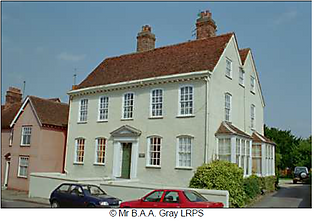


No. 2 "Little Bradfords"
This is a large and extremely complex building which has grown to its present size over a number of years. The build history for this large property is conflicting. The Royal Commission for Historic Monuments (1916) survey stated the section furthest from Bradford Street was the earliest with a late 15th century date. On the other hand, the Discovering Bradford Street booklet (1975) has it the other way around, making the wing nearest Bradford Street the earliest and giving it a mid-15th century construction date. Numerous wings have been added from the 17th to 20th century. The carved Bressumer on the south west front is worth noting.
In 1972 it was renovated and subdivided internally into 6 flats, the leaseholders are now the directors of the company owning the freehold and hold their leases on a peppercorn rent. Originally Bradfords Farm it takes its name from Bradfords manor. By the end of the 18th century it belonged to the Honeywood estate and was bought by the Courtauld family in 1891 then sold by auction in 1915.
Morant the Essex historian (1768), suggests that Bradfords Farm (Little Bradfords) takes its name from the family of Bradford who lived there in the reign of King John (1199-1216).
Thomas Wright’s History of Essex, 1836 details the lineage and ownership of the manor of Bradfords from the de Bradefords in the reign of King John until its purchase by John le Motte Honeywood.
Mr Filmer Honeywood owned Little Bradfords in the Nockold survey of 1803. By the mid-19th century the Honeywoods were in litigation of a disputed will and none settlement of earlier bequests. The outcome was that in 1890 Sydney Courtauld bought Little Bradfords for £1500 which together with £500 paid by Fredrick Smoothey provided the necessary funds to end the internal Honeywood wrangling’s. In 1891 Sydney Courtauld paid £500 for the gardens leased to Mr Smoothy.
In 1891 Sydney Courtauld sold a portion of the garden to Thomas Taylor of no. 4. This land is now the site of Creedy, Nightingale and Parkfield houses which were built in the early 1950s.
Stanley Dance (see no. 5) was living here as a child in the 1939 England and Wales Register.
In the early 1970s the building was renovated and converted into six leasehold apartments. The leaseholders are directors of the management company and pay a peppercorn ground rent.
